Ernst
Ernst
Berlin, Germany
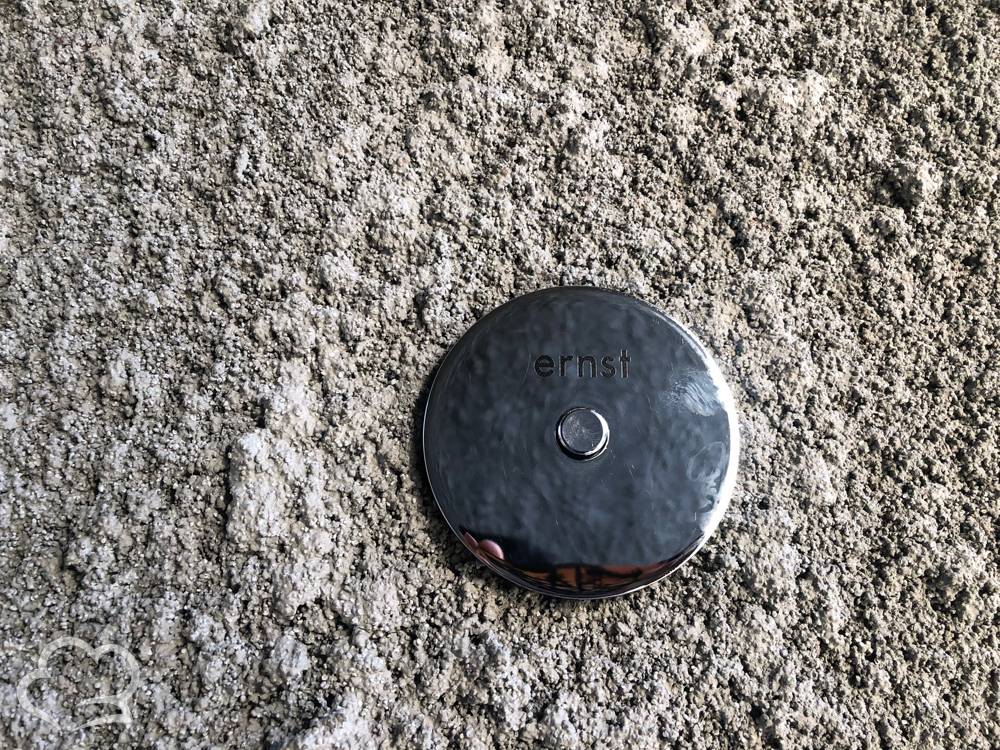
The last time (well, first time actually) I was in Berlin, I thought I would act the tourist and take a “food tour”. The tour was largely unremarkable because of the locations we visited, but the tour guide was a genuine lover of fine food and clearly spent every spare dollar exploring the most interesting restaurants in Berlin. At the end of the tour, I asked her for her favorite restaurant in Berlin as I was coming back in a couple of months. She said that hands-down, I should eat at ERNST which was more than a dinner – it was a life-altering experience — however, given the short notice (2 months???) I would be unlikely to get a reservation. She also cryptically told me that even if I did get a reservation, to do my homework or I might not even get in…
Never one to let a lack of information deter me from a potentially life-alternating meal, I attempted to make a reservation as soon as I got back home. Much to my chagrin, the restaurant was booked solid for the entire week I was in town. Now, I wasn’t about to let a simple reservation system defeat me, and so I reached out to the staff at ERNST, begging and pleading (apparently, I wasn’t above groveling either) for a coveted ticket. My pleading and persistence was rewarded with an invitation from Chef Dylan (more about him later) to purchase one of the coveted ERNST tickets – think Willy Wonka’s golden ticket, just less golden but no less valuable.
With ticket secured, I pondered my next task – I’ve never had to do homework for a meal before, and almost wasn’t sure of how to proceed. Google to the rescue. I learned that Restaurant Ernst isn’t just hard to get into, it is the most exclusive and difficult-to-book dinner in Berlin and possibly all of Germany, at the moment. A counter-dining experience that seats only 12 people every night and serves between 35 and 40 small bites at a rapid clip.
So many questions and concerns arose: is this a gimmick? What’s the business model? How long can you expect to survive if you only serve 12 patrons a night? Impressively, the menu is ever-changing, on an almost daily basis. The restaurant takes local sourcing to an almost fanatical level (but straying clear of the popular trend, isn’t relegated to just hyperlocal – they’ll go anywhere the best ingredients can be found) developing family-like ties with the producers. Even more impressive is that they develop similarly close relationships with non-local sources which supposedly leads to better ingredients. Given the counter-dining, it seems clear that the young head chef of Ernst, Canadian Dylan Watson-Brawn, is aiming to change the way you view your fine dining experience by positioning you in the thick of food preparation. You can see the cooks making the food and then plating it right before it reaches you – you have a front row seat to Dylan conducting the symphony of culinary execution. All of this added to my anticipation for the meal (epiphanatic culinary adventure) at ERNST.
As anticipated, and as many others have reported, I got lost as I made my way through the neighborhood of Wedding. Once there, I wondered if I had made a huge mistake. Half the store fronts on the street were boarded up and covered in graffiti with piles of debris lining the street. The restaurant, located at number 53 now features two massive ground-to-ceiling windows and a shiny aluminum door that only opens if you ring an almost impossible to find door bell – the only hint you are in the right place is a small plaque with the engraved letters “ernst”.
The door opens to to an entryway lined by the staff. I was delighted my VIP status was finally appropriately acknowledged as they all greeted me as I was ushered into the kitchen/dining area where an L-shaped wood countertop wraps around the kitchen, which is where you’ll sit to watch the culinary magic happen. Imagine my chagrin as everyone got the same royal treatment. The venue design with its mix of grey concrete and brown marble with the bright counter and lights conveys a very Japanese vibe.


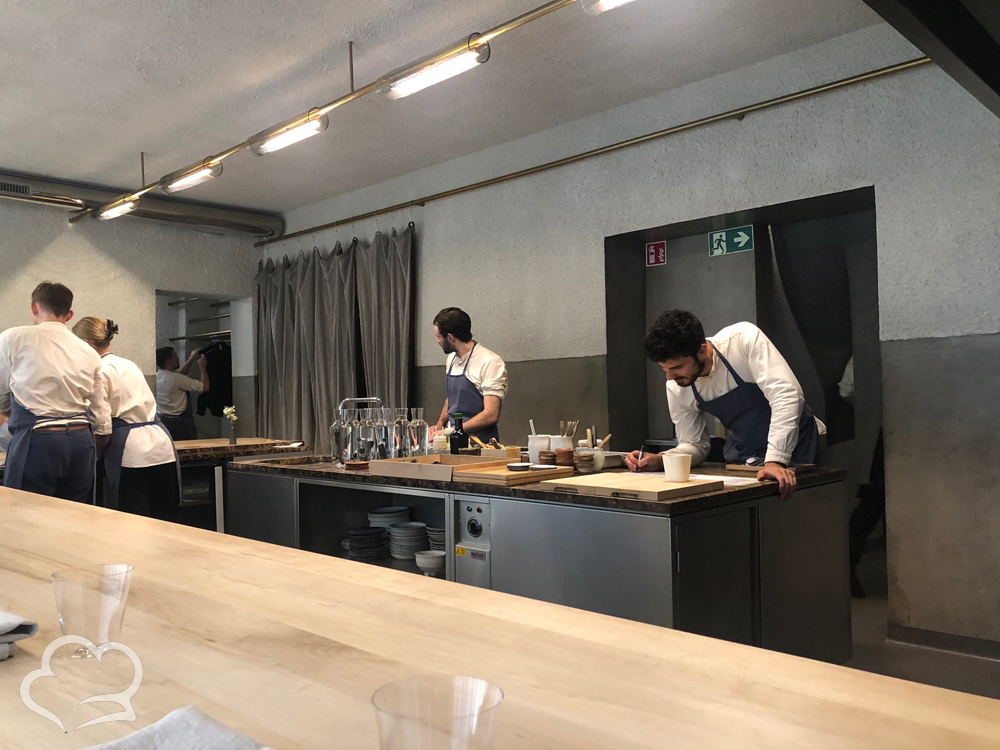
Before the meal began and as final preparations for the first course wound down the staff came by and chatted with us – Dylan, who has a quiet unassuming mannerism, stopped by to say hi and to address any questions. It was delightful to interact with the artists creating the meal while sipping a wonderful Blanc d’Argile champagne from Vouette & Sorbée which was one of the first makers to go organic. Creamy in texture with notes of burnt toast, green apple and floral tones, a nice way to start my adventure.
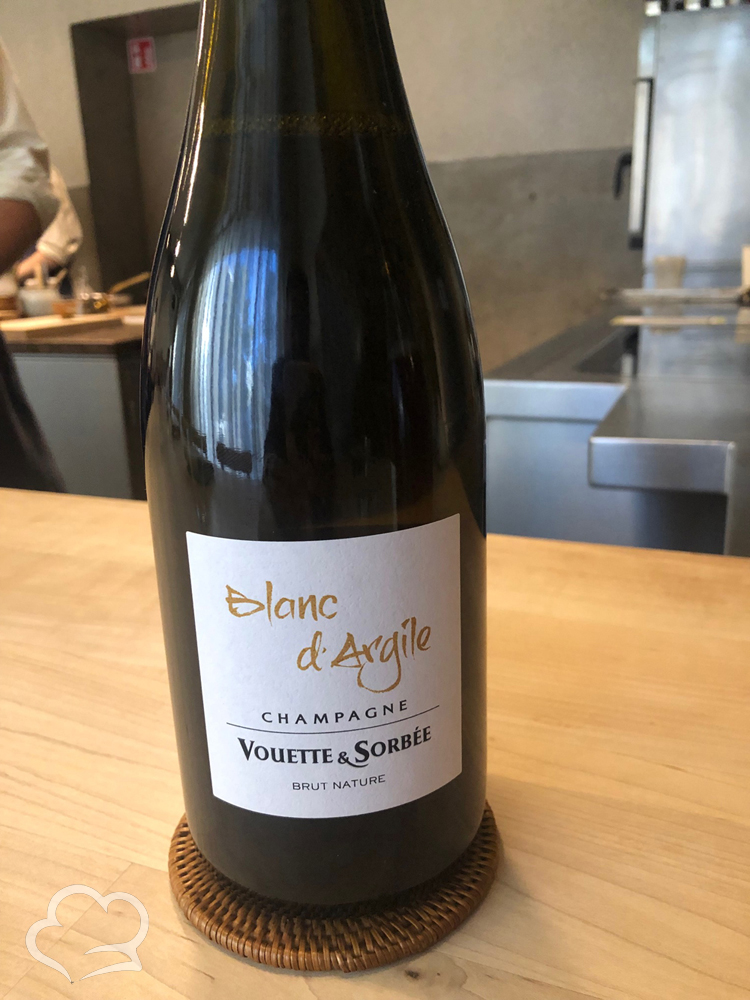
Now a blow-by-blow of the amazing meal!
The first bite (I’m going to call these bits, as referring to them as plates or dishes seems a bit absurd) was actually a sip: simple juice of pea pod (peas to make an appearance later) ensuring no part of the incredible produce goes to waste. The juice was in a base of dashi sourced from Kaido. Peas were delivered earlier that morning and had never seen the inside of a fridge, Dylan noted. The flavor was actually a little grassy but did carry the notes of pea. Felt like I may be preparing for a cleanse.
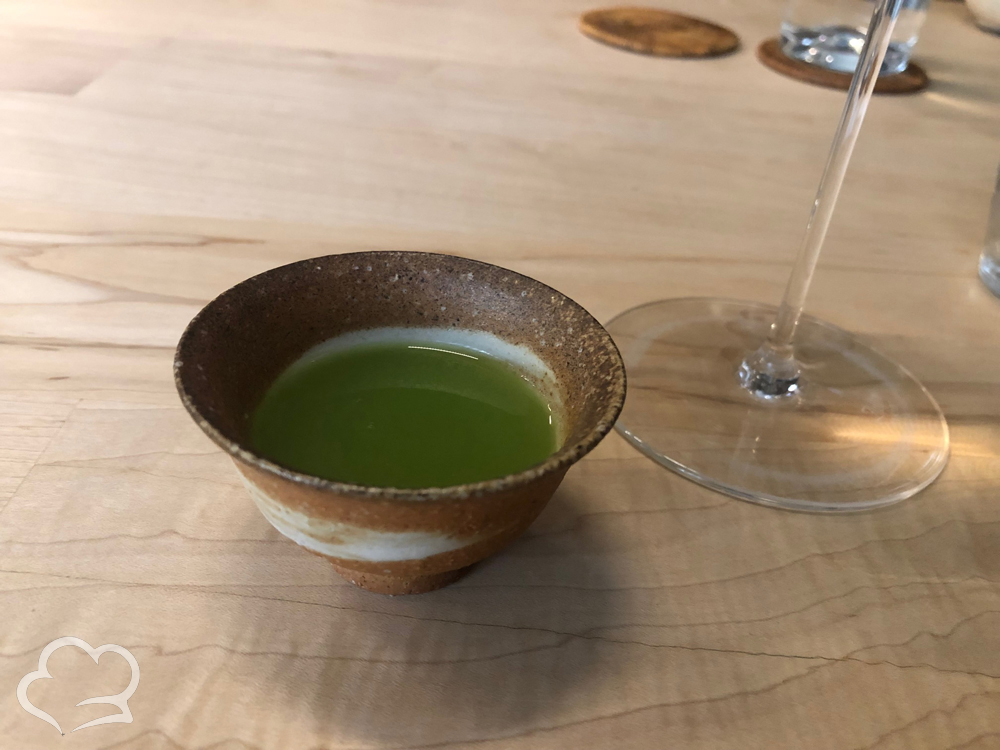
Ok, I’m on a sparkling wine kick and so quickly moved to the Christophe Mignon rose – another winner with hints of caramel and citrus. I though this was an interesting wine because “Mignon’s unique approach to viticulture, fondly referred to as the Mignon Method, combines natural practices including biodynamics, phytotherapy, homeopathy and geobiology. The moon is his guiding force for all actions in the vineyard and cellar.” I’m not sure I buy into the whole “moon thing” but the wine was fantastic.
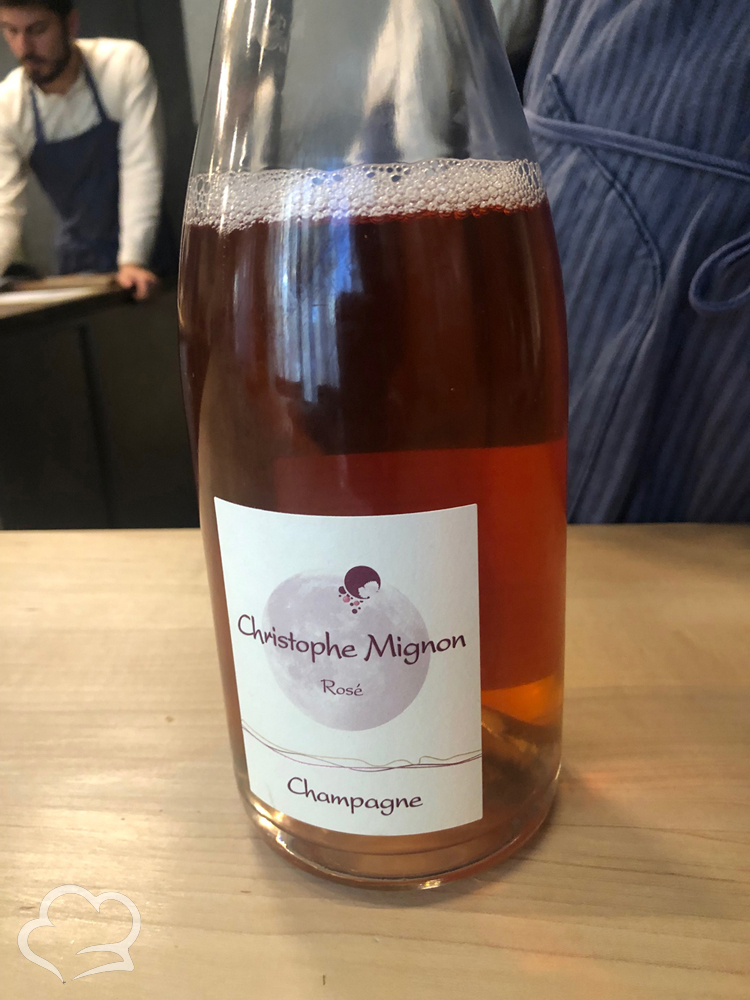
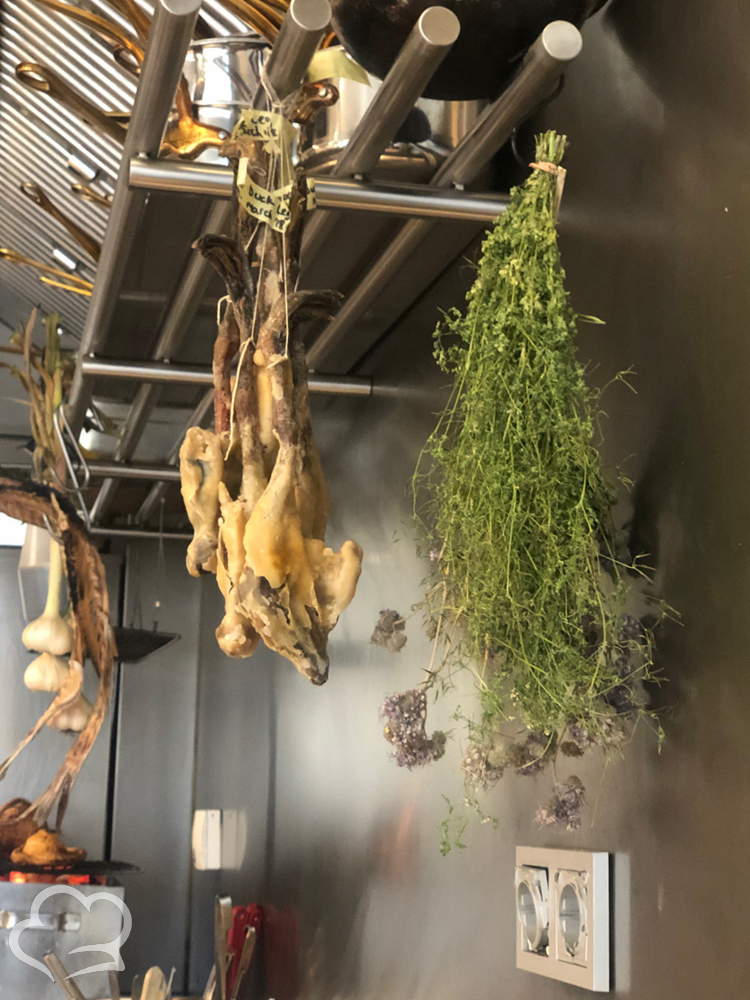
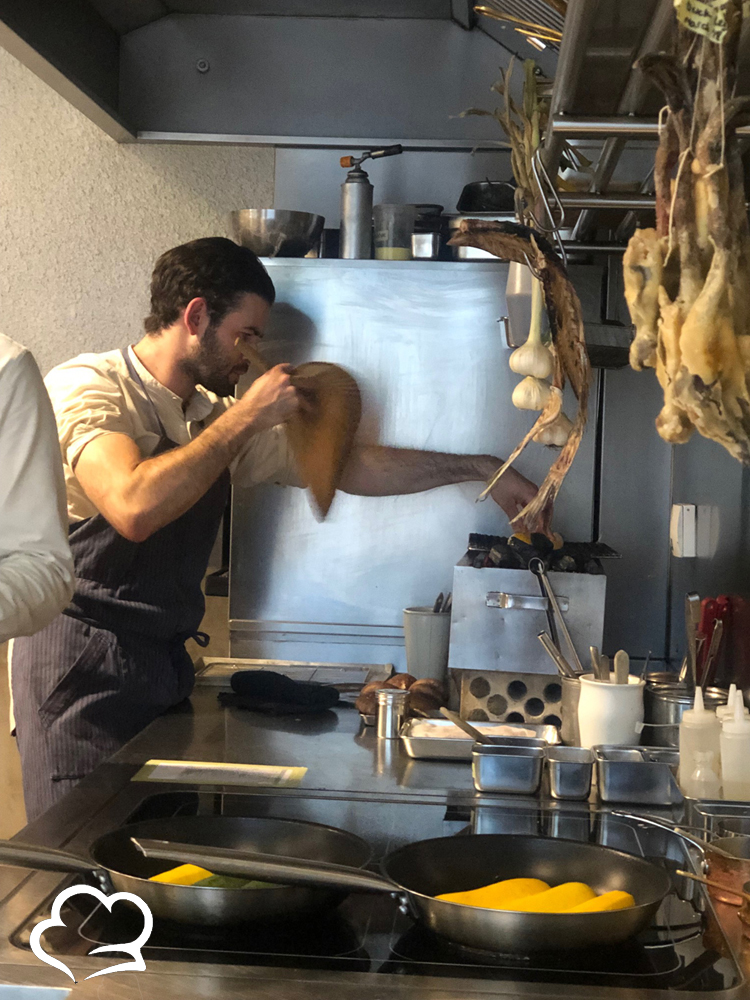
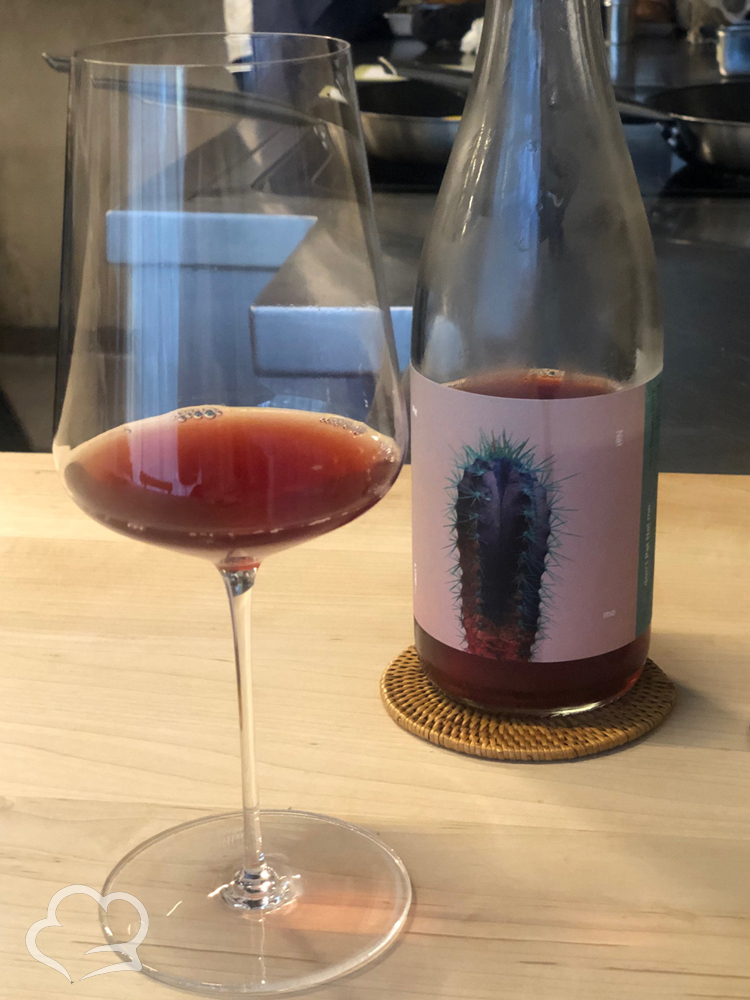
Second bite was simplicity – cucumber from Bloomberg Farm (an all woman cooperative) drizzled with dashi (to tie it to the last dish) and garnished with purple orange blossom. Nothing spectacular but very fresh.
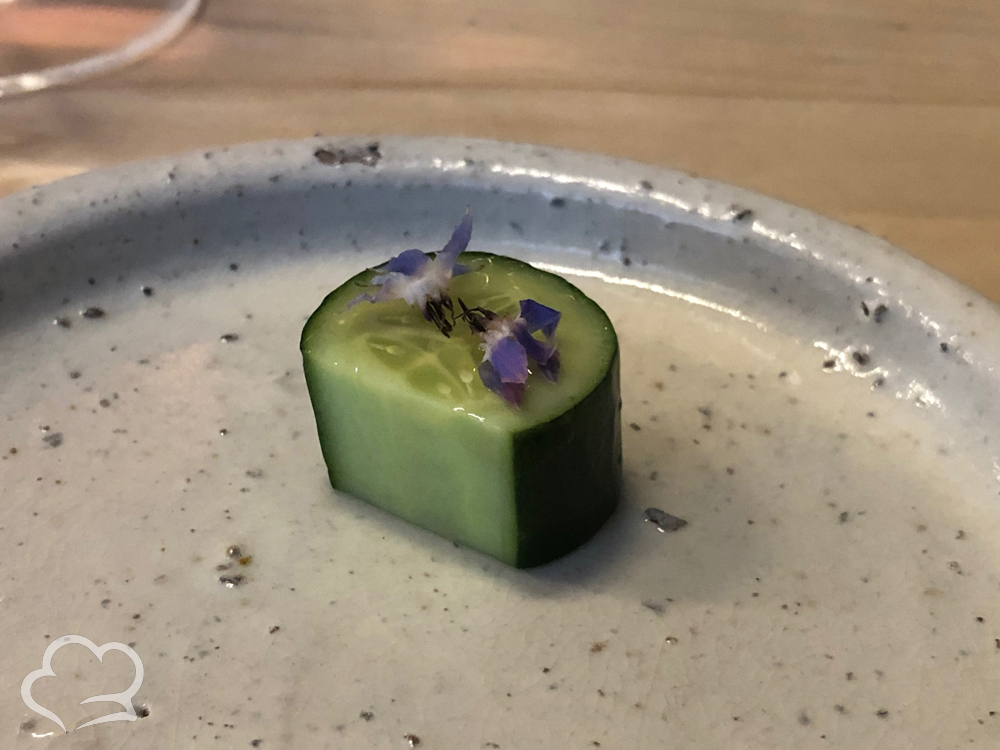
Third bite was a shot glass made from kohlrabi filled with almond paste and white current. This dish was a light and sweet broccoli flavor that was complimented by the tart of the currents and nuttiness of almond. First course I’d call sensational.
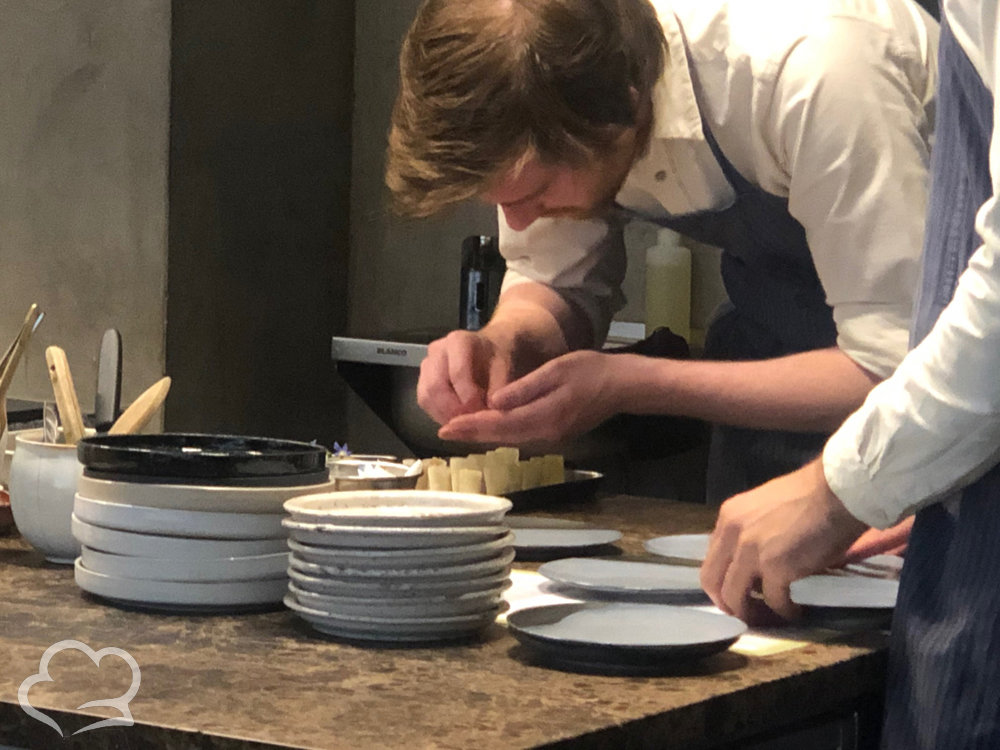
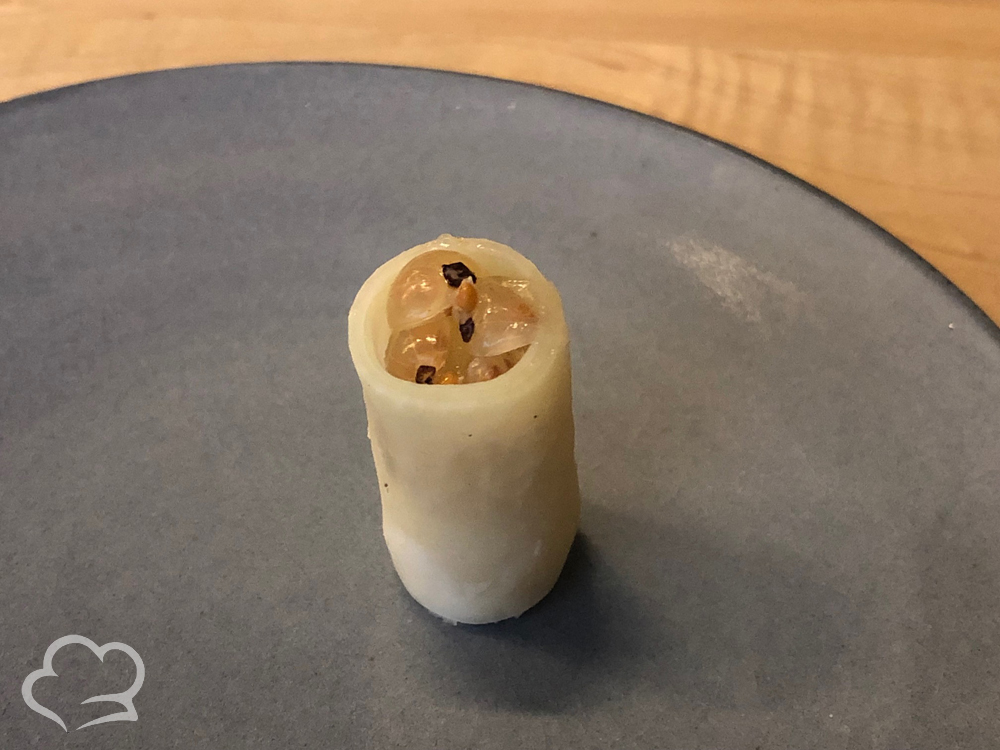
The fourth bite was another simple dish, pan carmelized yellow squash with grape seed oil and Greek sea salt. The sweetness of the squash and just a hint of saltiness cleansed the palate for the next course.
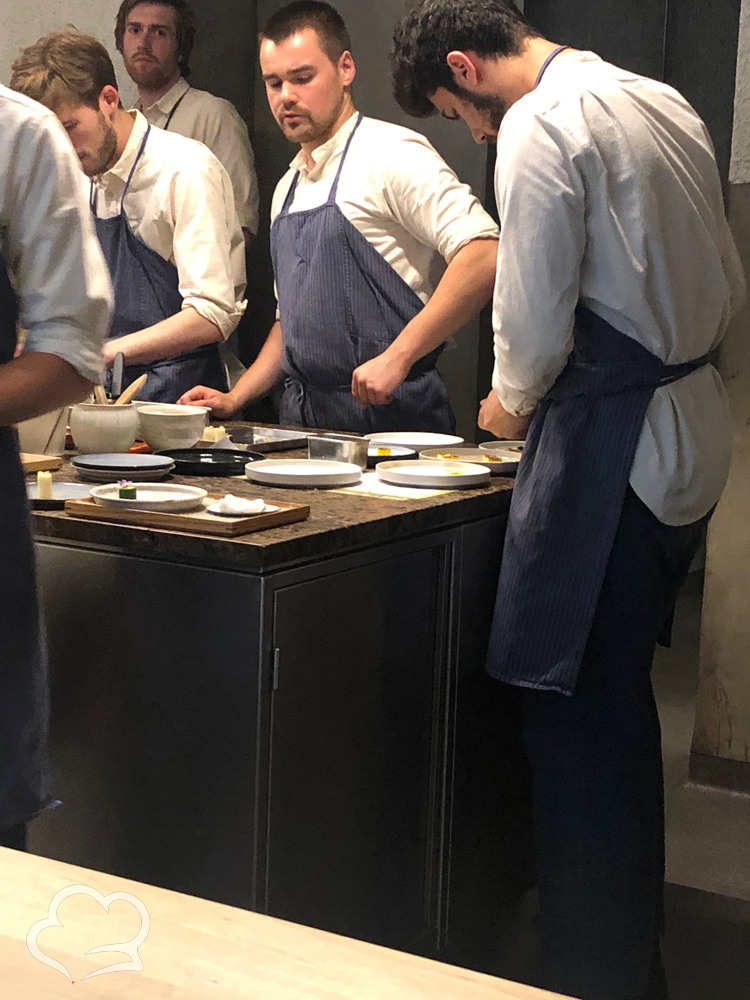
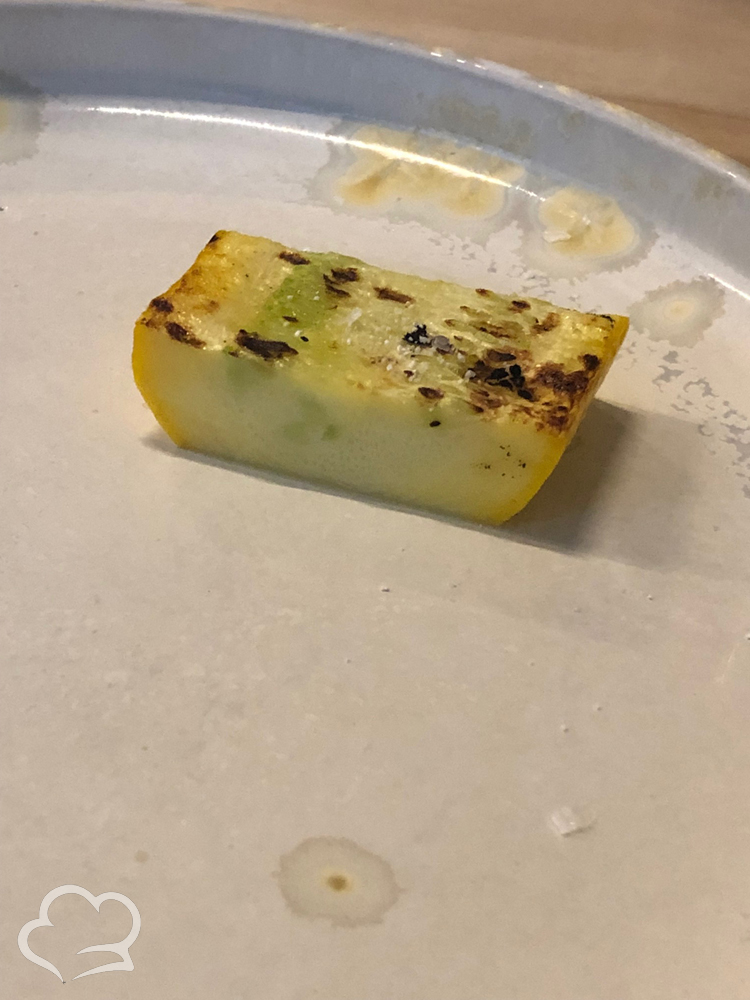
The fifth bite was a complex creation. Apricot, dried 4 days, grilled to a light char, filled with seaweed paste and 4 year-old pickled plum (umeboshi). The sweet of the apricot masks and then contrasts with the sour of the plum flavor bursting as you bite into the morsel.
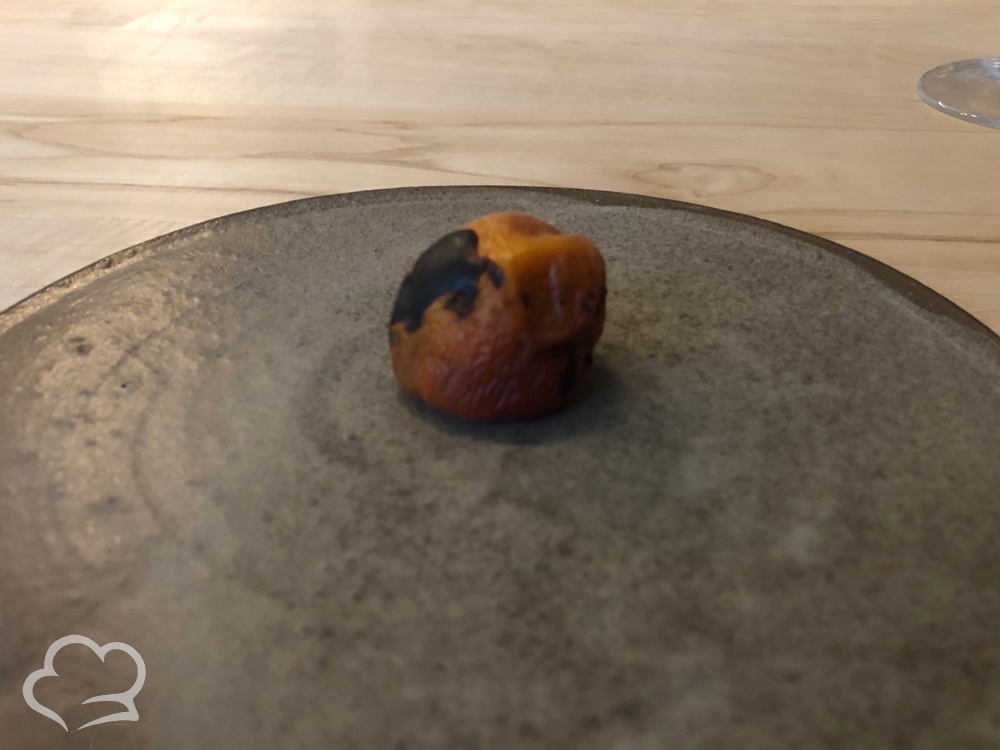
The sixth bite called “tart” was another marvelous creation featuring lobster with paste of lobster head on a radish chip. I never thought one could make lobster taste even more lobstery. This rich dish was the first of many where I seriously considered trying to snag my neighbor’s portion but I have a feeling someone would have noticed.
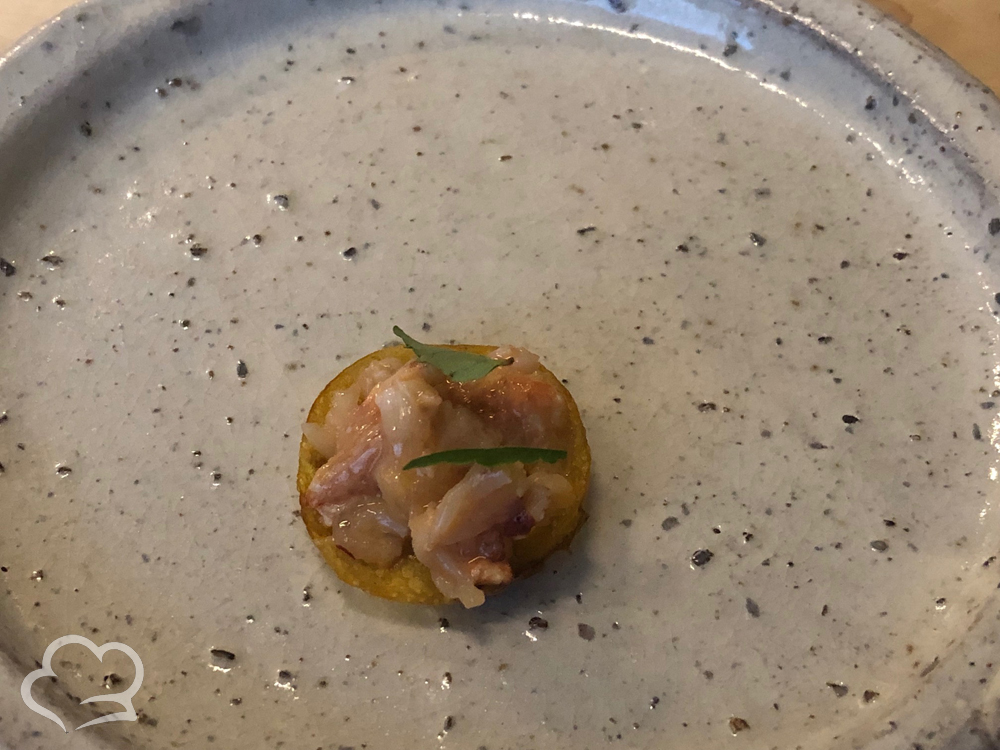
The seventh bite was fresh halved strawberry served with a thinly sliced lardo cured with sansho peppers. The oily lardo mellowed the pungent spiciness of the pepper and contrasted nicely with the fresh juicy strawberry.
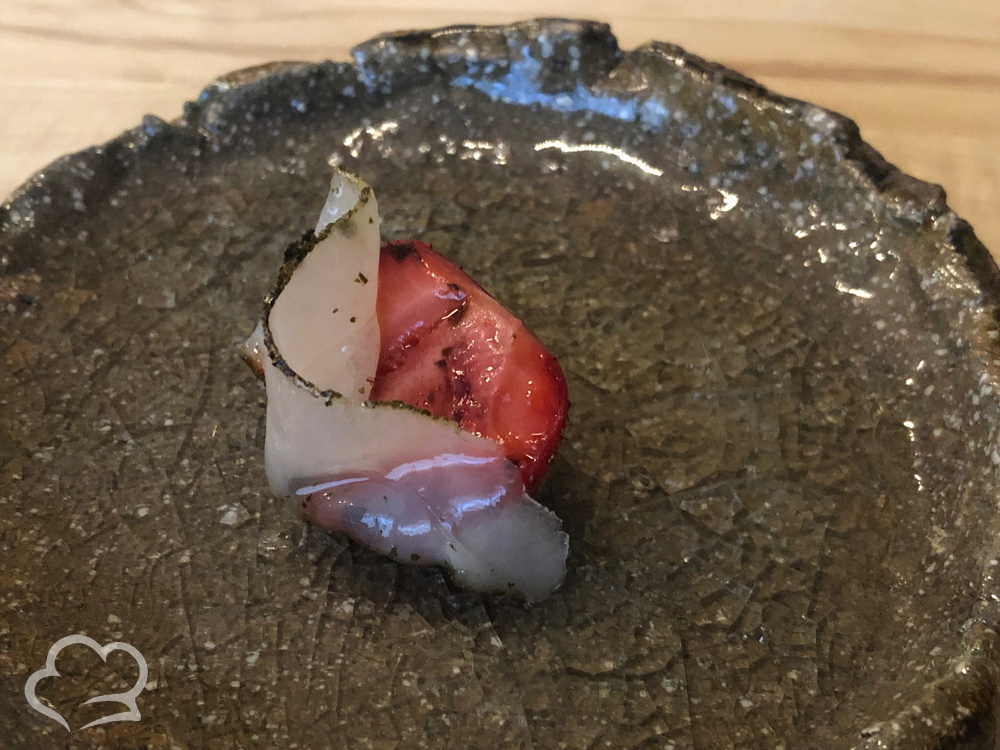
The eight bite was a return to freshness with blanched chars wrapped around diced pea pods tossed in heirloom sunflower seed paste which added a nice touch of nuttiness. I completely understand the desire to use all parts of the peas but was wondering if a future dish would feature the cardboard box in which the peas were delivered…
One interesting aspect that I havn’t commented on yet was how the kitchen team worked seamlesly together to get the dishes completed – it was like a professional dance performance in many regards – below you can see a couple of photos of the team making and then plating the dish.
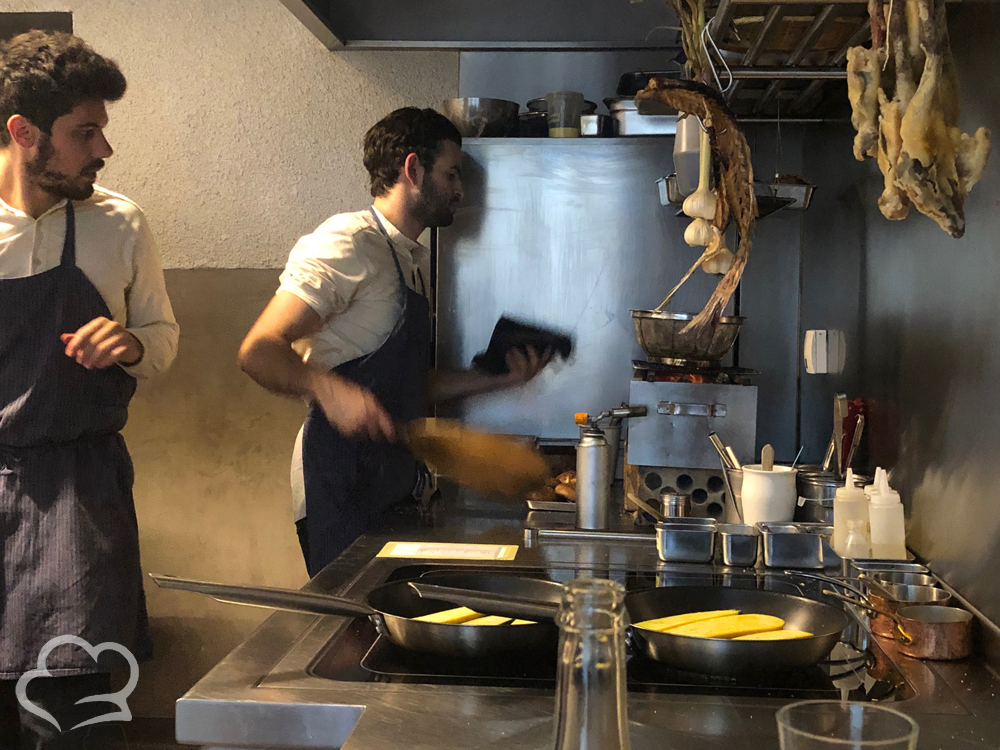
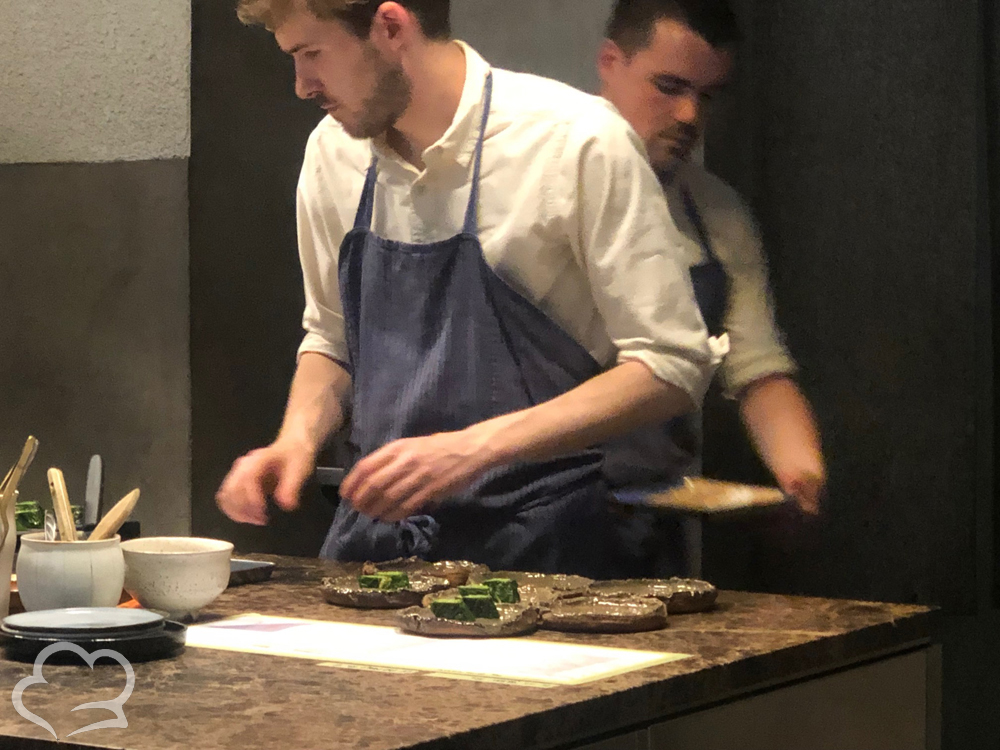
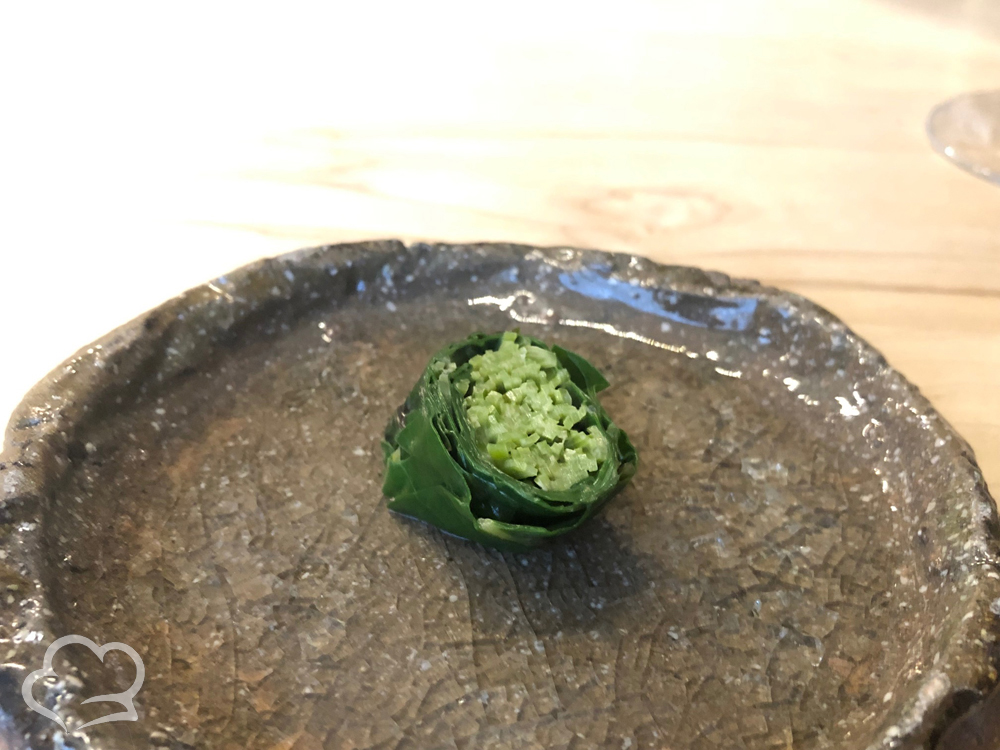
The ninth bite was another simple and fresh bite. Hyper locally sourced young fava beans blanched and served with a touch of Israeli sea salt. The beans grown by a local farmer, Olaf, are delicate and tender. This bite seems to epitomize Dylan’s culinary philosophy: the best ingredients should be minimally manipulated to showcase original flavor.
The tenth bite was a piece of art. Sesame leaf, delicately swirled around a mound of diced sea bass tossed in apricot paste. The apricots come from a particularly flavorful harvest last year and were preserved for just an occasion.
The eleventh bite “skitake”, was just that – a shiitake half from England, smoked, grilled and topped with bonito flakes. I’ve since seen others prepare mushrooms by smoking which when done correctly, as was the case here, accentuated the flavor adding depth.
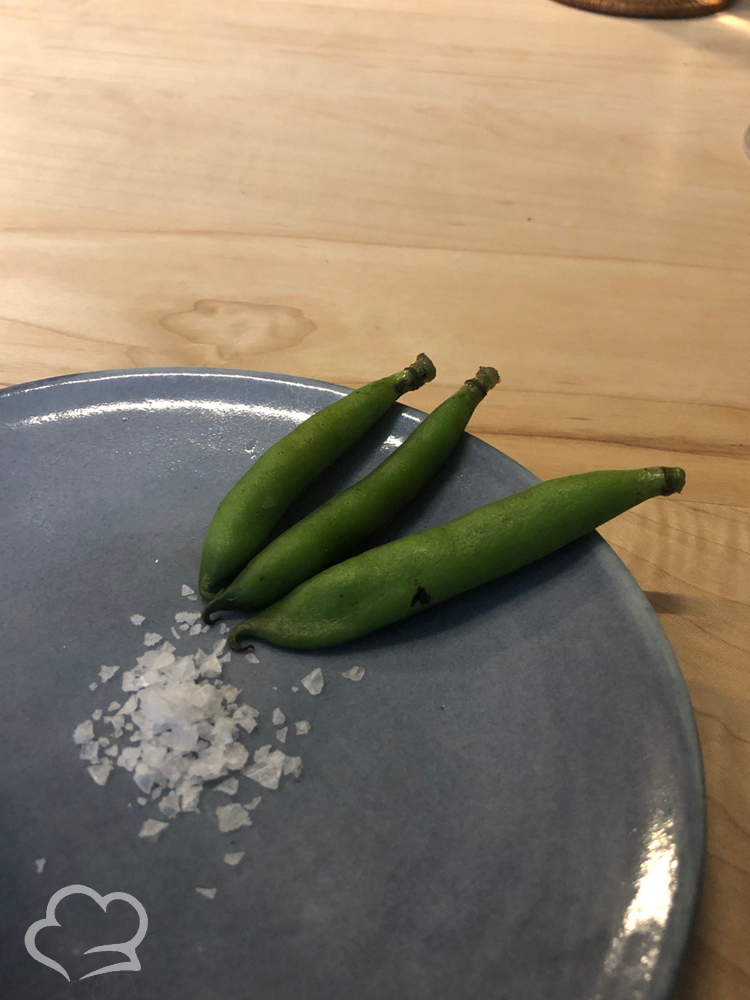
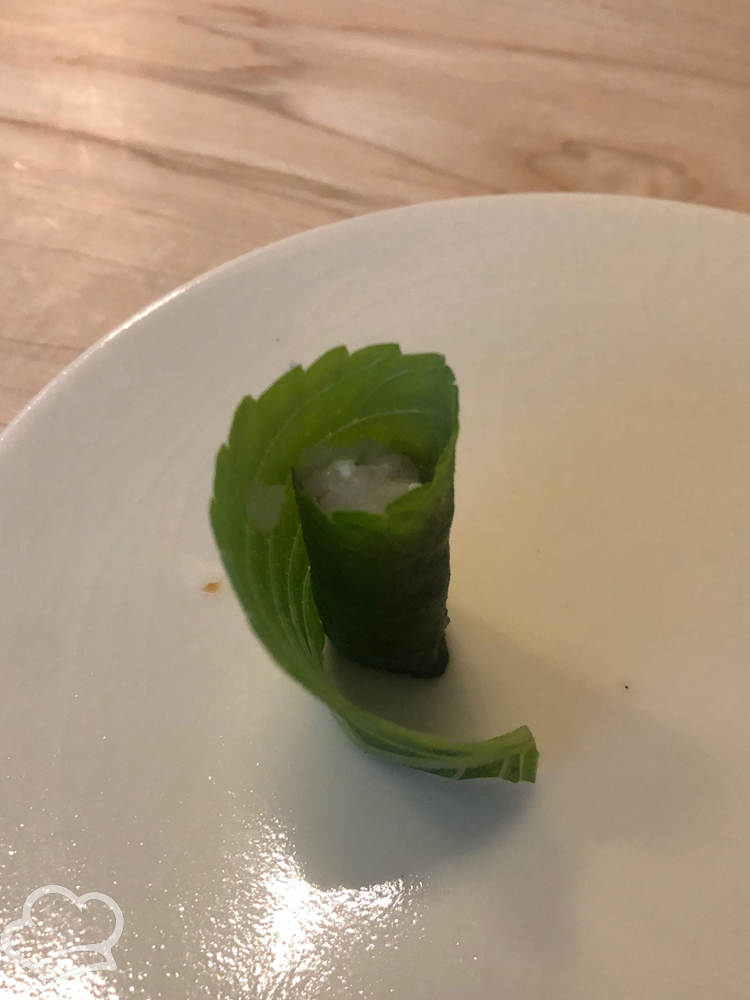
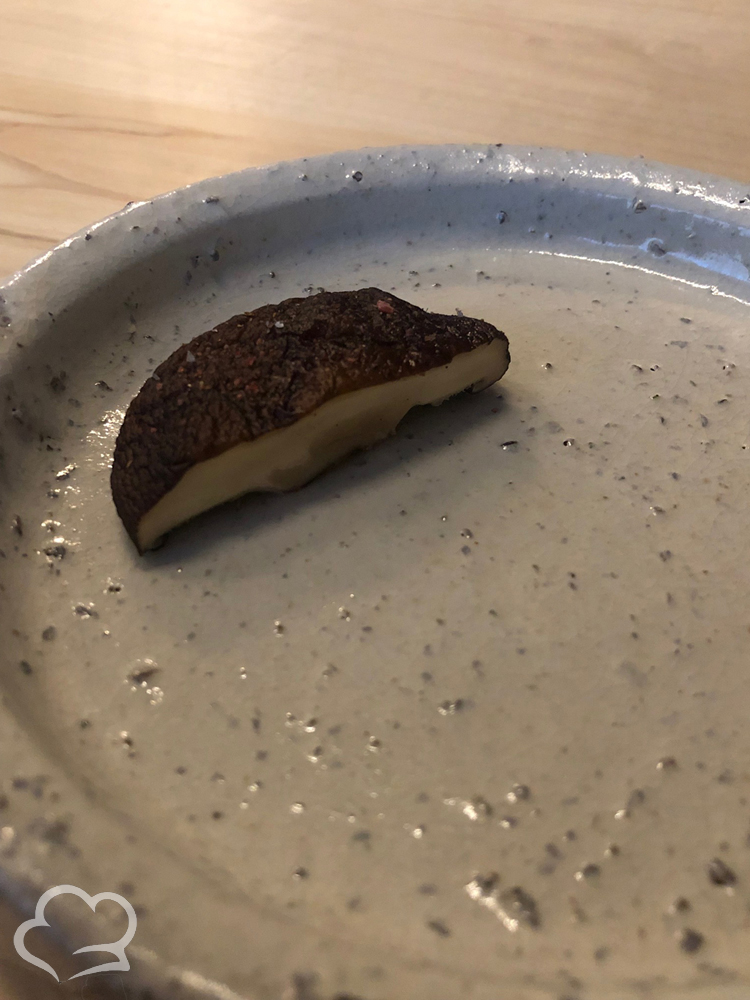
The twelfth bite was a bit more substantial and was called “salad”. Heirloom lettuce was meant to be eaten by hand after being dipped in a buttermilk dressing with elderflower vinegar. The pungent (in the best way possible) dressing was served in a bowl with leaves on the large brim and was meant to be drank afterwards.
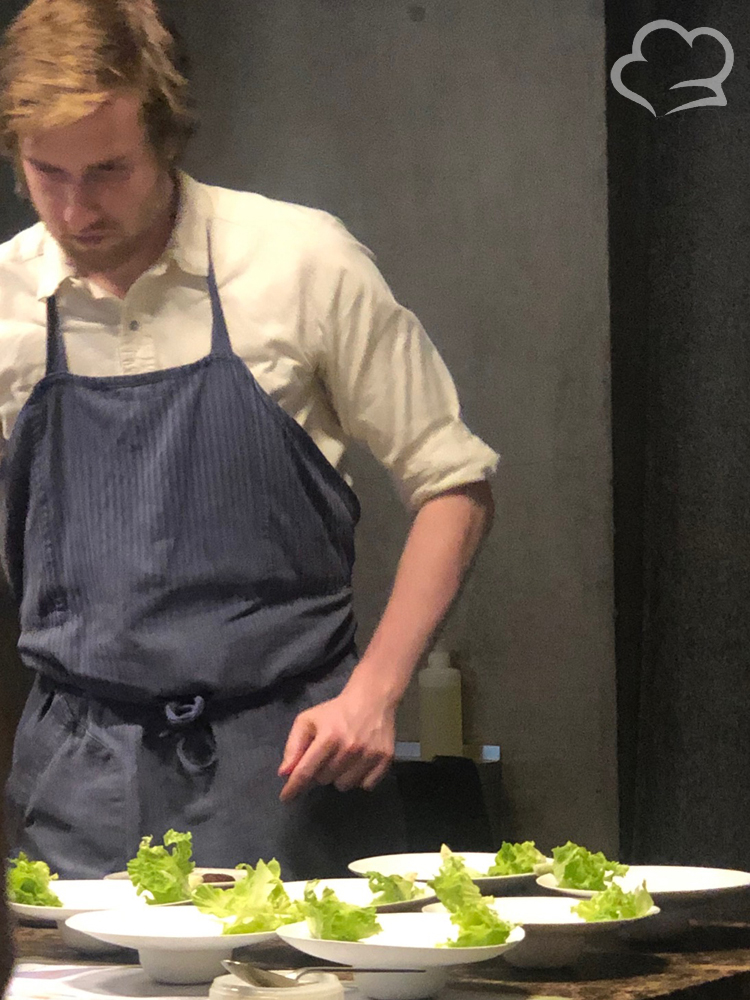
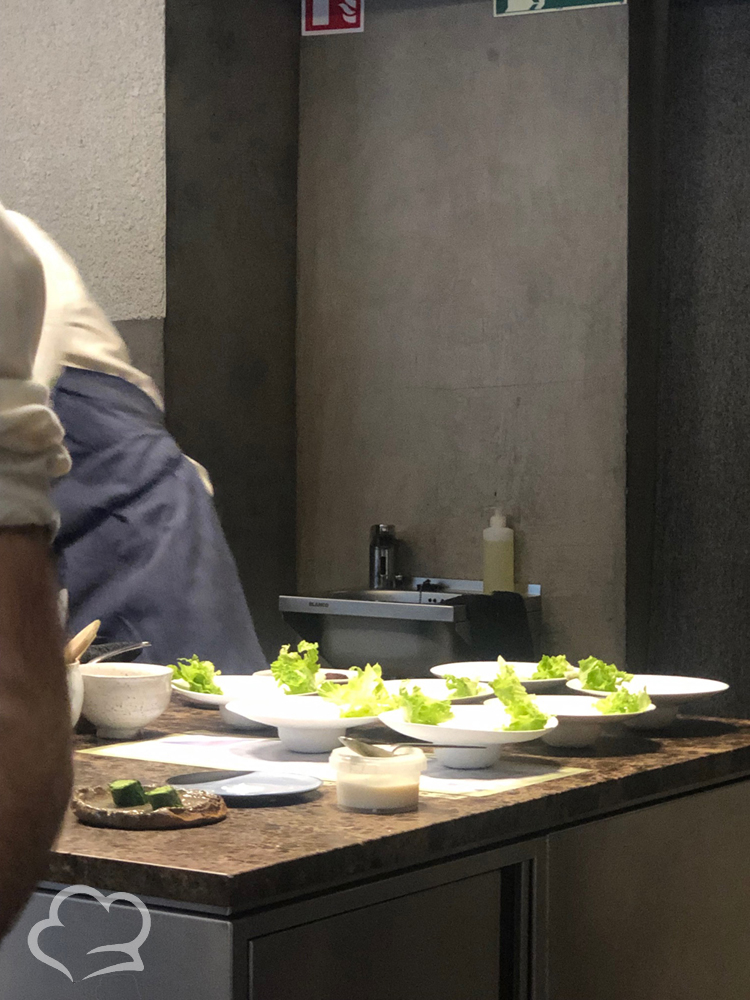
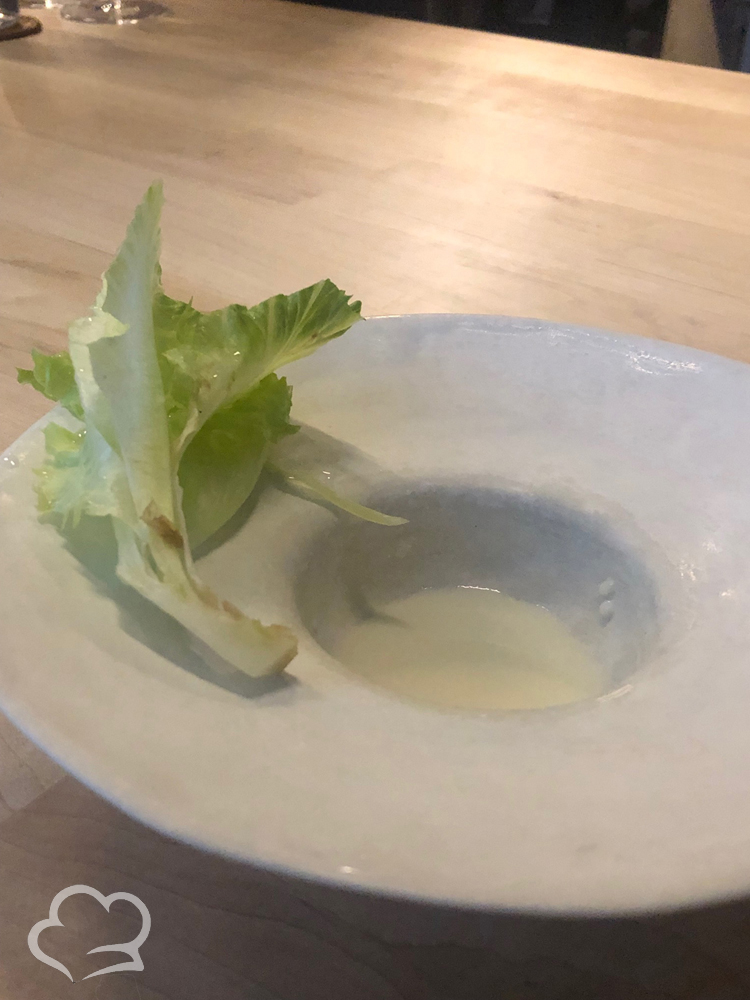
The thirteenth bite was far from unlucky – fresh brioche made in a Japanese pan to allow caramelization of the crust. This was served with fresh butter made from one particular Jersey Cow, Ushie. The butter was yellow because of the fat and Ushie’s primarily flower based diet. One of the best breads I’ve ever had – think my neighbor will mind *inches hands towards neighbor’s plate*. Below, you an also see how the kitchen staff had to juggle courses. even though there were just 12 patrons dining, often the team was working on 2 or 3 dishes at a time (and possible even more with prep-workin mind).
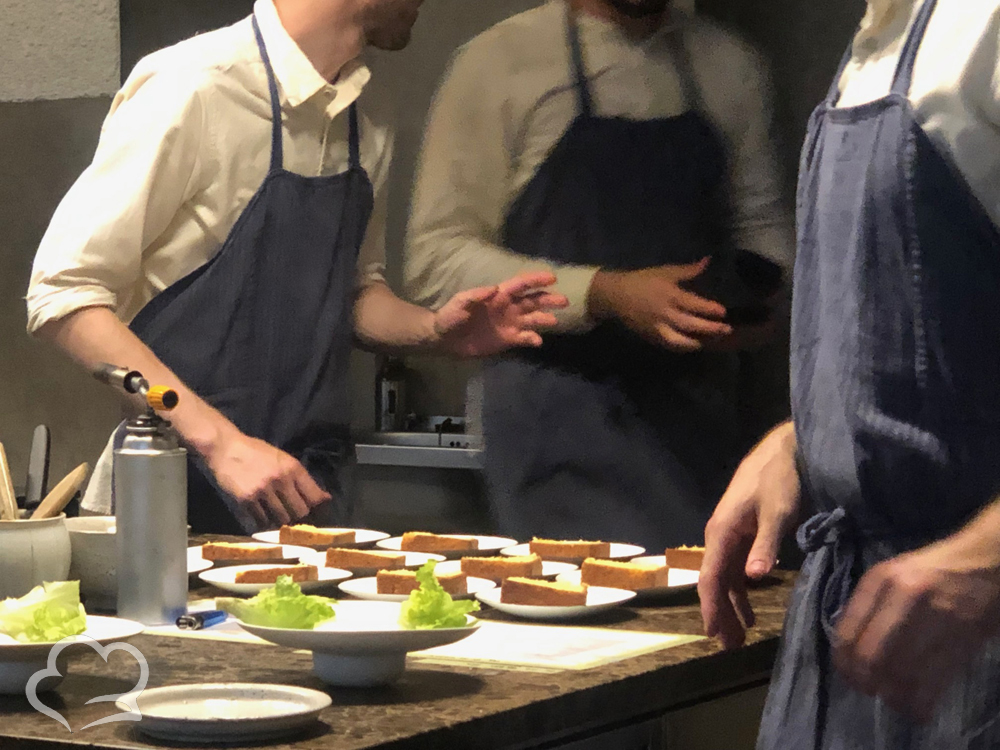
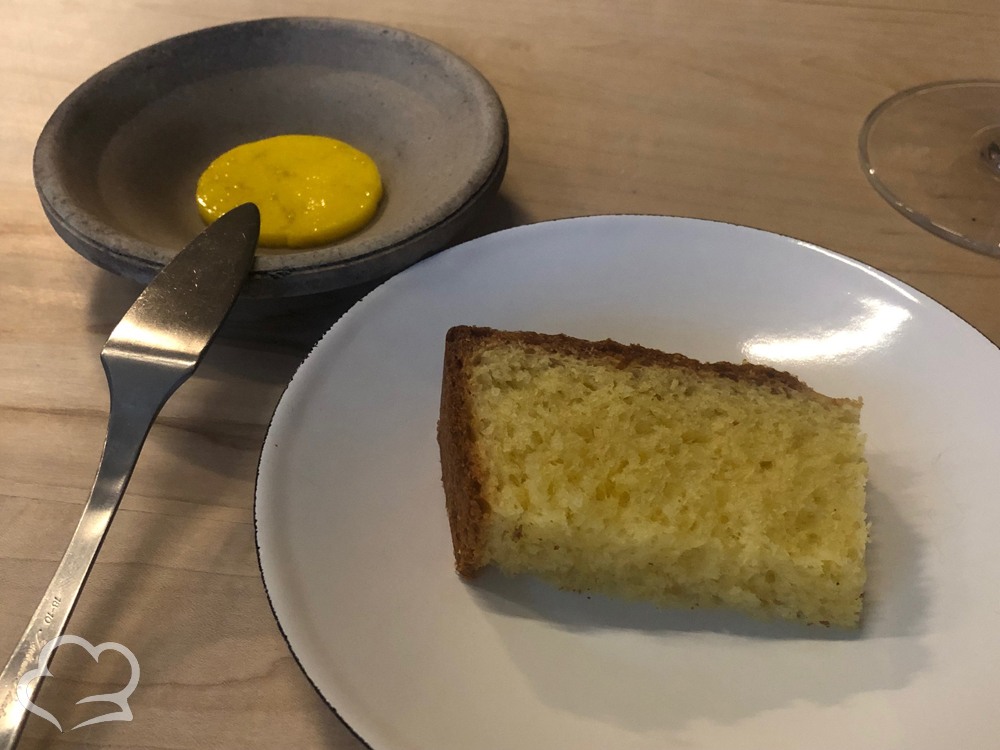
The fourteenth bite was cucumber, grilled and marinated in jelly made from apple vinegar. Simple in appearance, but with complex flavor profile.
The fifteenth bite was one of the prettiest of the evening – zucchini lightly pan-fried served with a sauce of zucchini flower and garnished with zucchini flower petals. A bit of a zucchini bomb. The dish overall has a surprisingly delicate sweetness to it but otherwise kept to the produce-forward theme thus far.
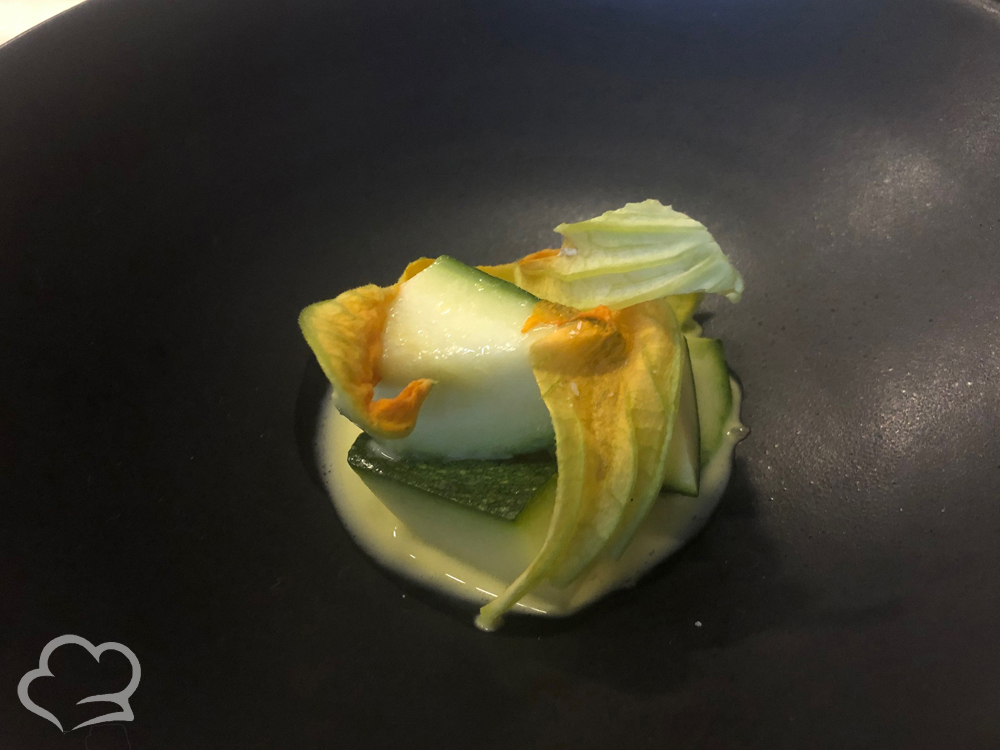
The sixteenth bite felt like the closing of some culinary loop (spoiler alert: true closure happens much later, in the dessert course) – recall the pea shells from the first few courses? Well their peas finally made an appearance. These sweet green pearls were lightly warmed to brighten the flavor and served in a sauce of pea pod and smoked goat cheese. Interestingly, the cheese comes from a farm that is trying to bring back a critically endangered goat of which only 300 remain. Eight are producing milk. I guess since you can’t eat endangered animals, the only thing left to do to exploit them is to milk em… I had never thought that was an option. These peas were little explosions of sweetness in the hearty sauce. I understood why everyone had been making such a big deal about them.
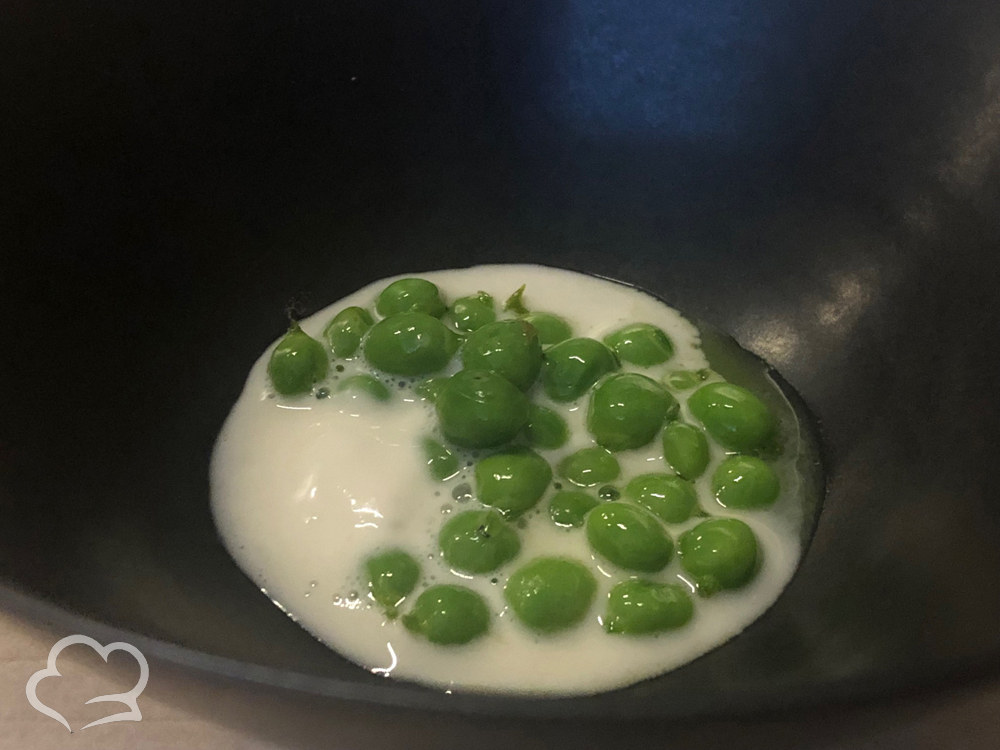
The seventeenth bite was shrimp from Normandy poached in dashi served with oil from the collar of sea bass. Often claimed to be the most flavorful part of the fish, the collar is the triangle of tender, fatty meat between the gills and the rest of the body. It’s the fat that gives the flavor and post-cooking tenderness. Given this, it wasn’t surprising the shrimp had more of a fishy flavor. I think I may have just preferred these little guys lightly grilled to put their flavor on center stage.
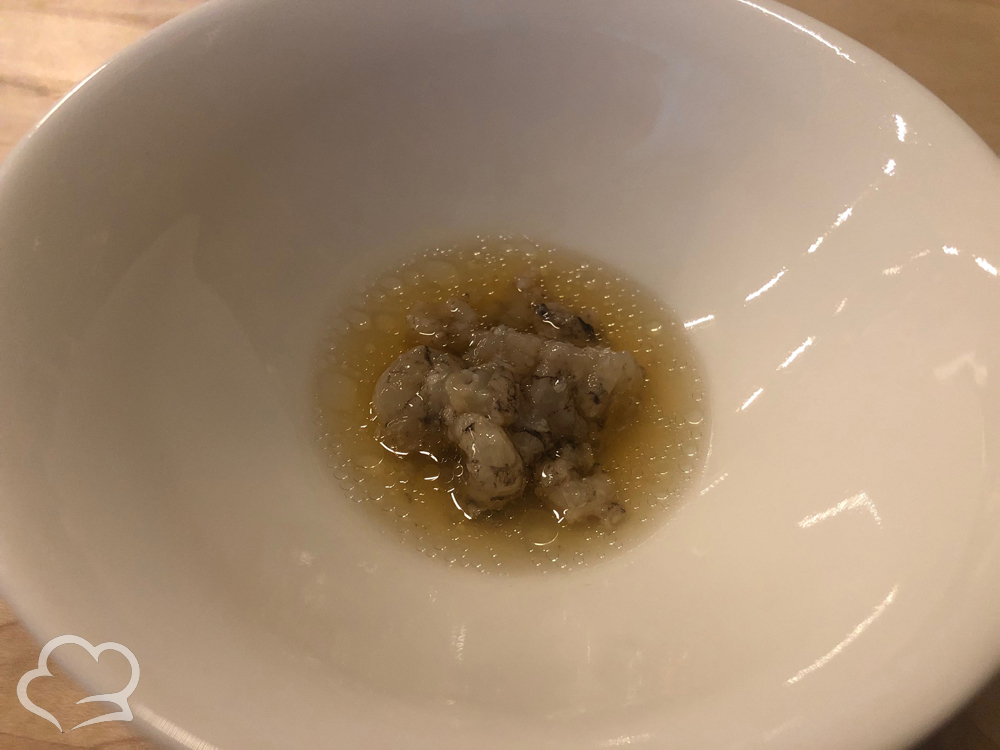
The eighteenth bite was a very Christmassy looking dish with a salad of ice plant leaves and strawberry dressed in strawberry vinaigrette. The succulent leaves have a wonderful bite to them and a distinctive lemony flavor. This was a refreshing break after the previous two heavier dishes.
The nineteenth bite looked more like a dessert but was goats cream (how much milk do those 8 goats make?) served with smoked sunflower seed oil and sage flowers. The flavor was fresh with a hint of smokiness and nuttiness.
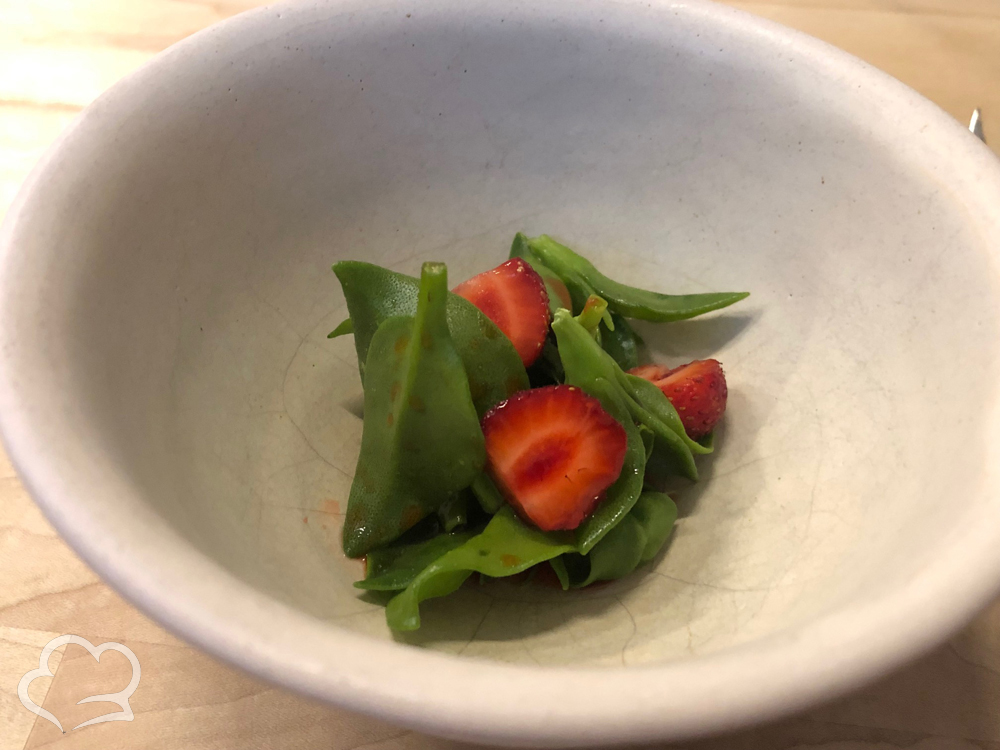
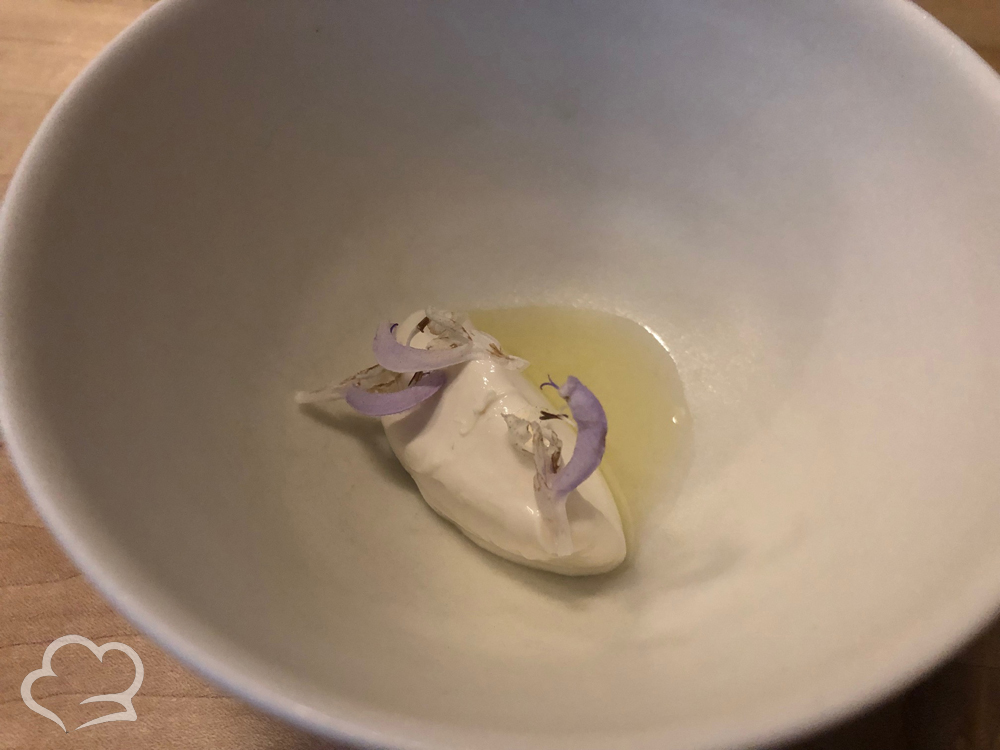
The twentieth bite kept the focus on dairy but was a bit heavier than the last, with ricotta cheese dressed with grape seed oil (from Mount Etna where the volcanic soil, altitude and climate combine to yield faster ripening fruit) with sun dried red currents. This was a nice combination of sweet and tart.
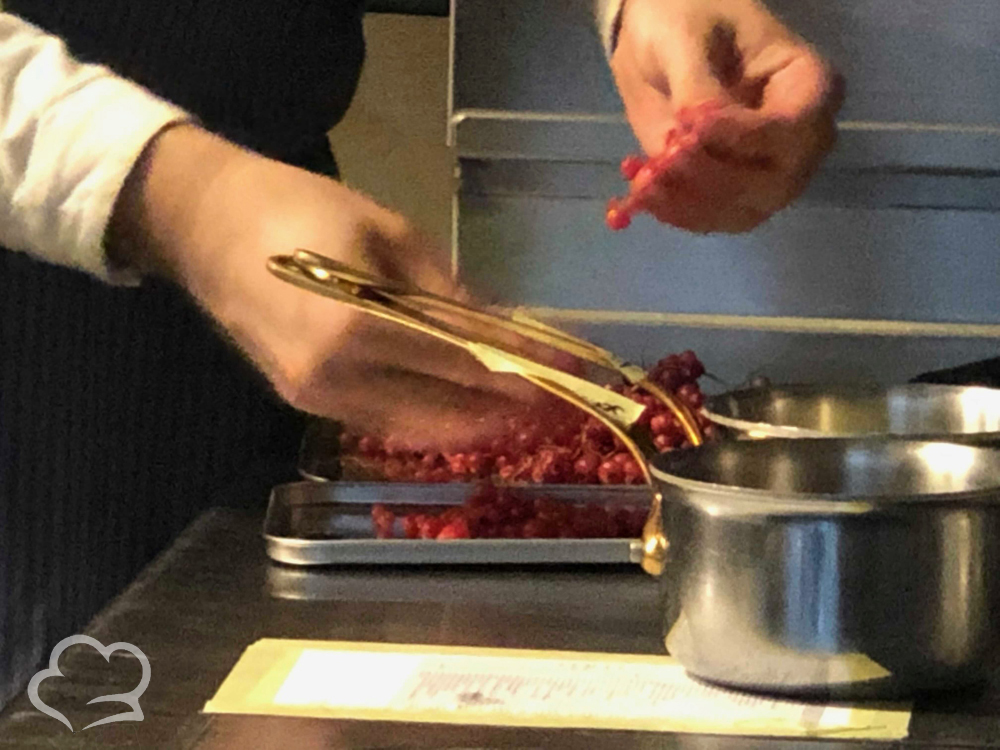
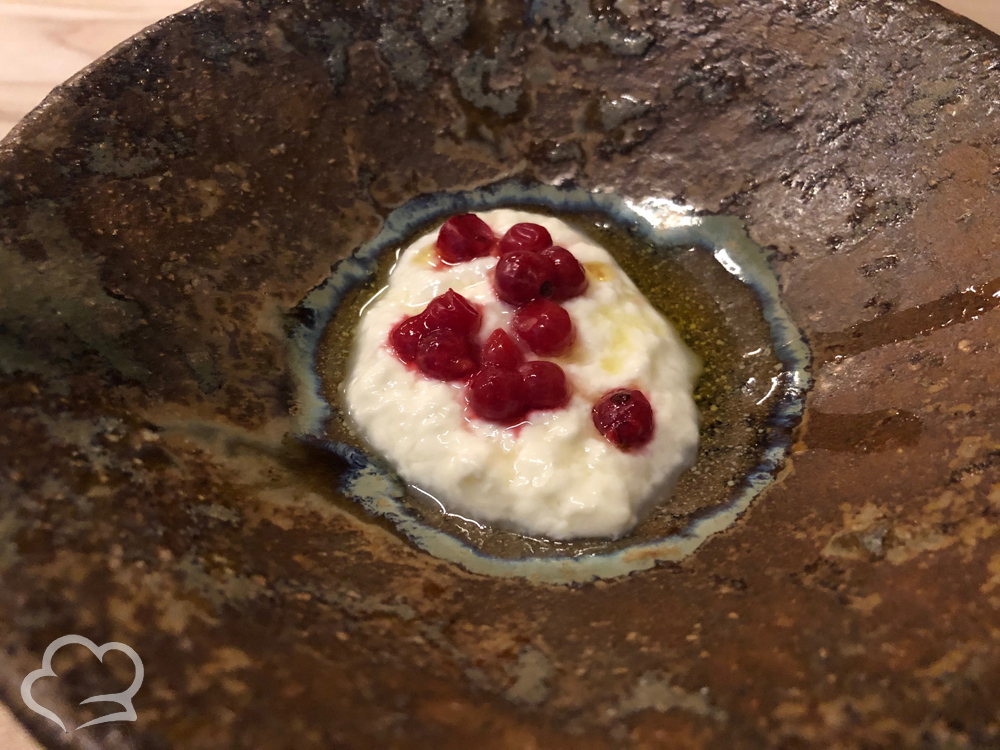
For the next bite, we had our silverware taken away and were instructed to eat by hand. Mangalista boar charcuterie. These pigs, indigenous to Hungary translate roughly to “hog with lots of lard” and are also known as woolly boar. This strain was reduced to a couple hundred individuals in the 1990s but have made a comeback thanks to the food industry. The slices of red belly which are mostly cured meat and slices white shoulder strips mostly fat that melts at body temperature – as it lays on your tongue. The dish came with a distilled grape alcohol (think grappa) that we dipped the meat into before we popped it into our mouths. I found the alcohol too overpowering and decided to have the thin slices on their own, alternating between red and white. I found that a perfect way to enjoy this particualr dish.
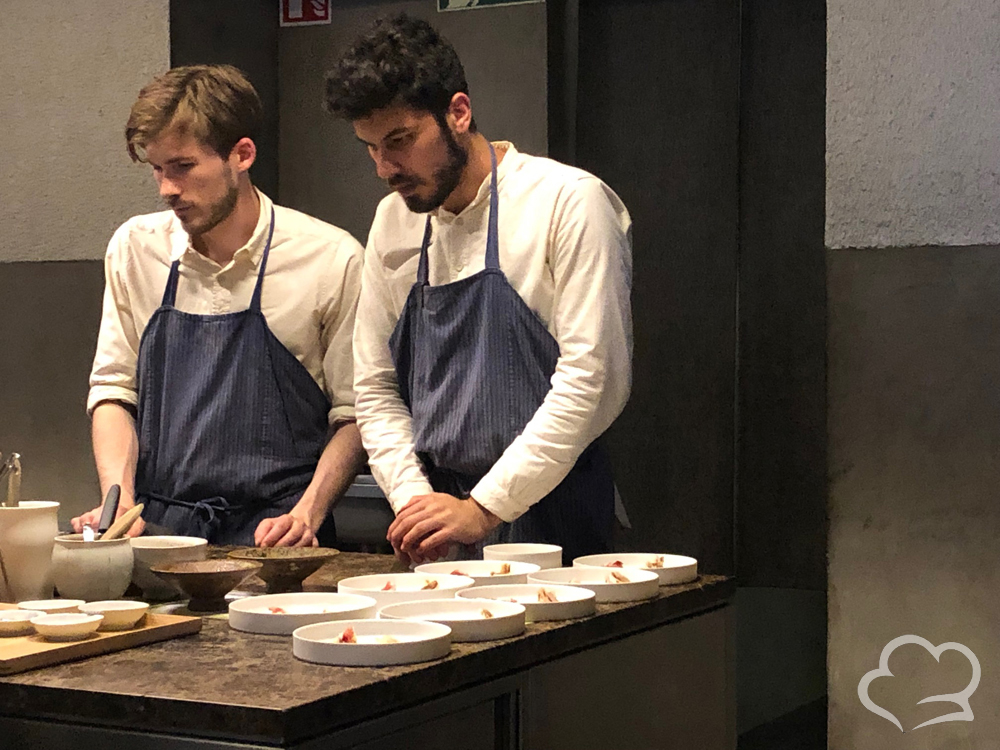
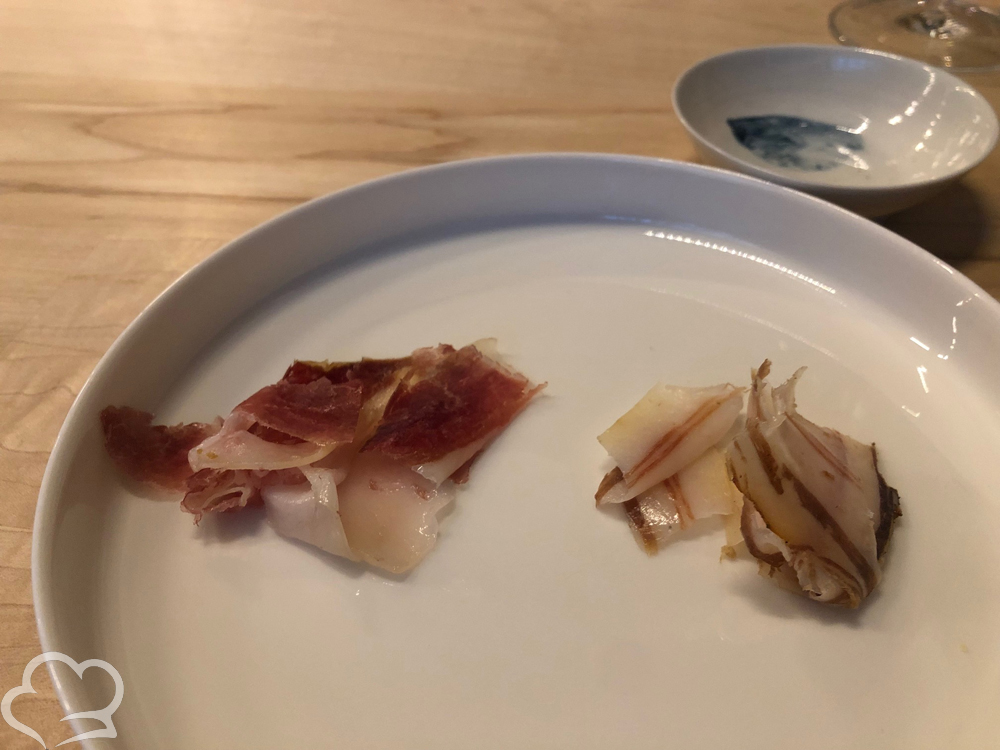
After these heavy courses, we again cleansed our palate with the twenty second bite: pickled radish with watermelon in watermelon juice. Refreshing!
It was time for another glass of wine: 2017 Chablis coterie du rosette from Alice et Oliver de Moor. It was a floral wine with fruit aromas and green apple and mineral notes. Not the most impressive glass of the evening, but very serviceable.
The twenty-third bite was sourced a little more distantly – sea bass sashimi (remember the sea bass collar oil from an earlier bite) with sea salt and wasabi. Sea bass was delicate and mild and was caught by a fisherman in France named David.
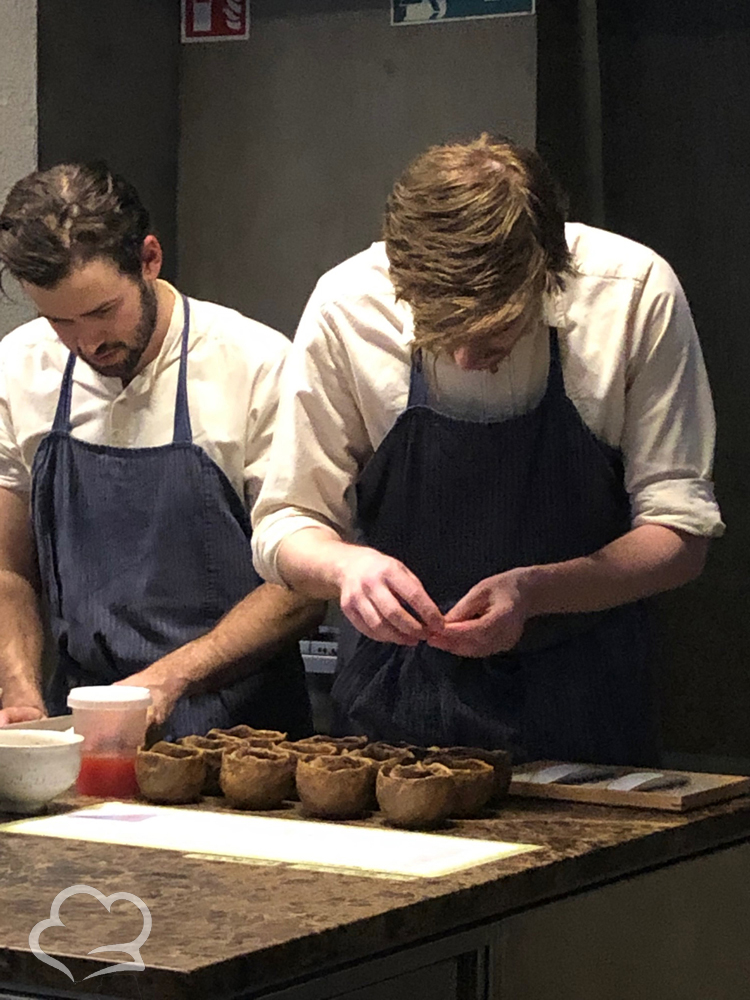
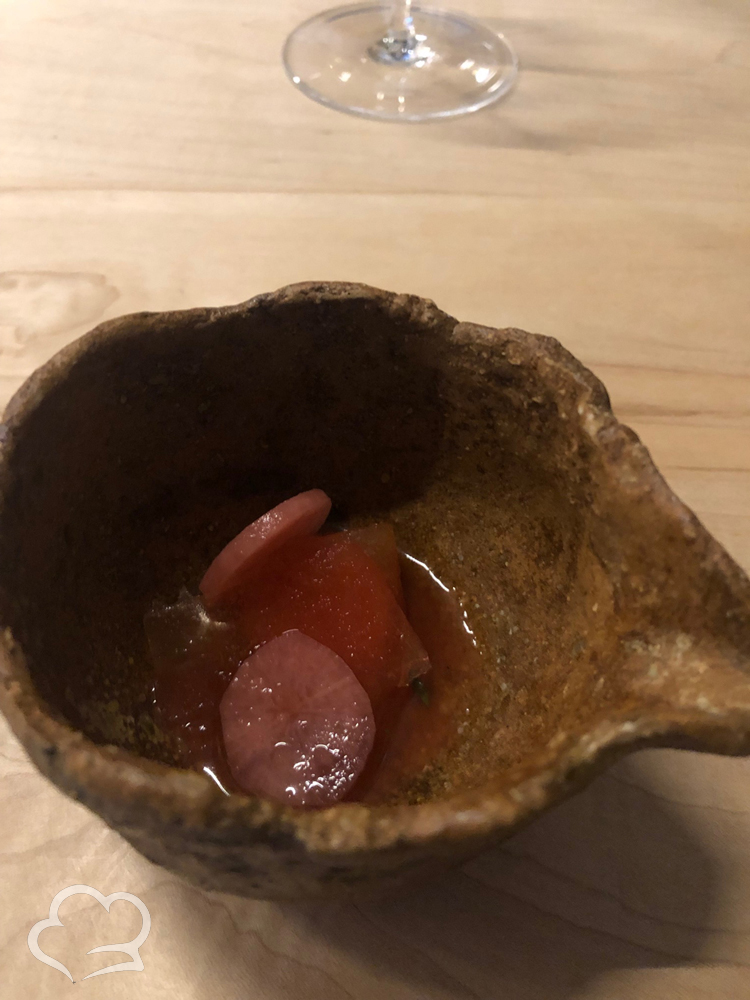
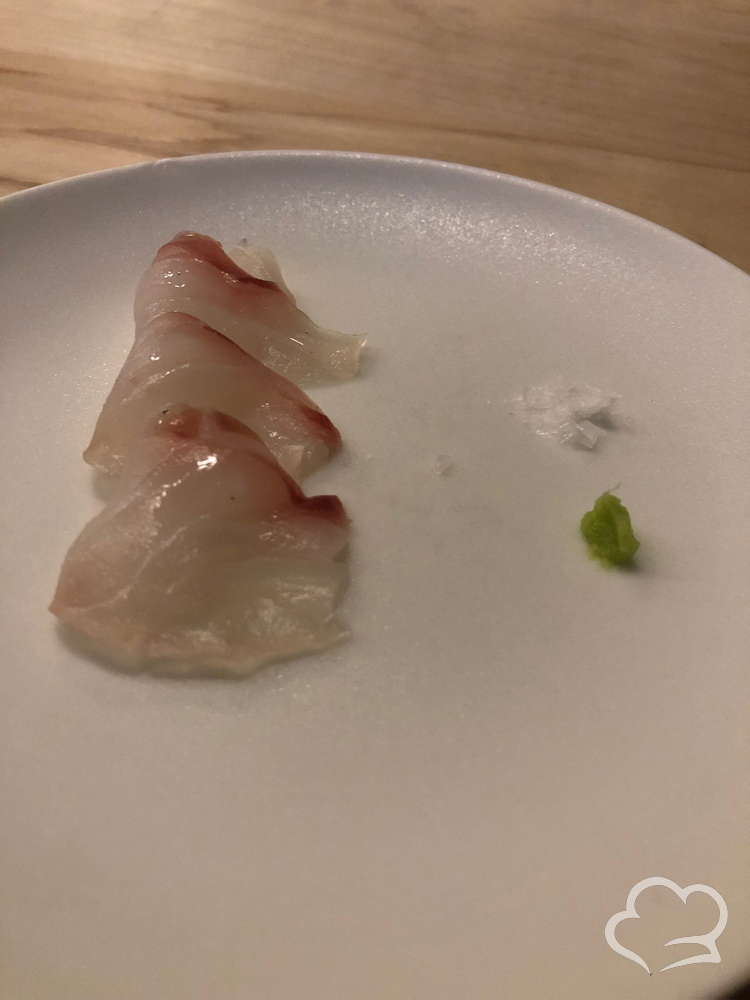
The twenty-fourth bite was Fine de Claire oysters farmed by Earl, a friend of David’s. These oysters are a favorite of many a chef and are finished in knee-deep claire (rectangular salt ponds) for a minimum of one month, during which they fatten and take on a sweeter, fruitier flavor from the water. While they are delicious au’ natural, here they are poached in dashi, and served with Kaffir lime leaf oil.
The twenty-fifth bite was simple: grilled string beans with ponzu, a tart citrus based sauce.
The twenty-sixth bite was a bit more complex: squid from France, caught by fisherman David’s friend Beau. The squid was sliced razor thin, and topped with dried powdered tomato and tomato skin oil. The sweet squid and bright and tart tomato flavors combined very well.
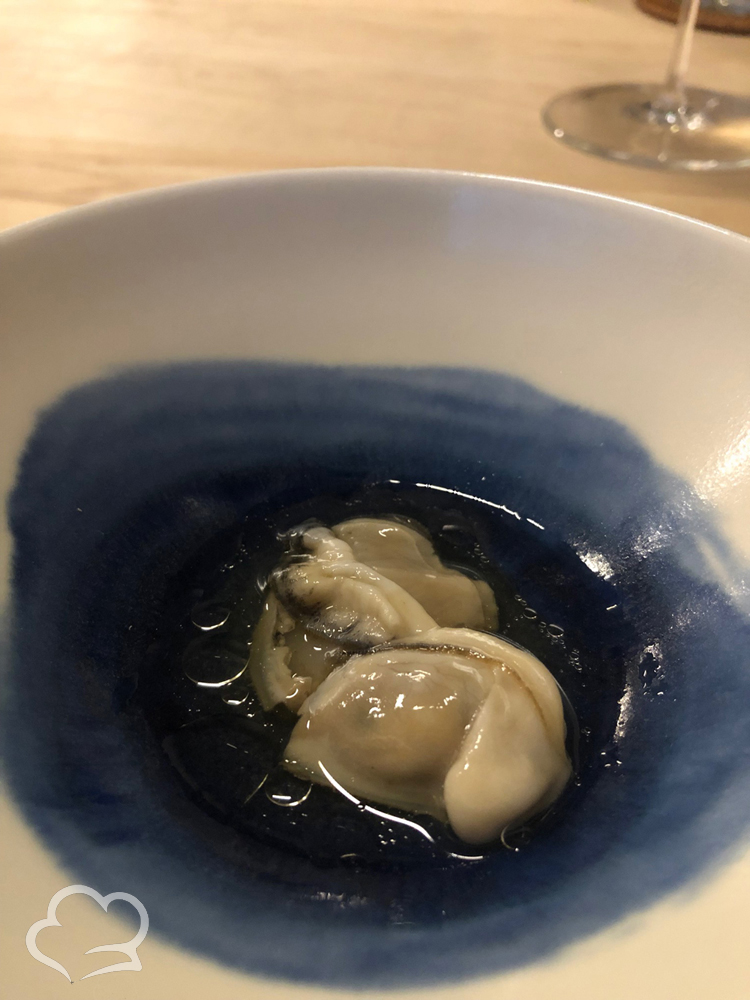
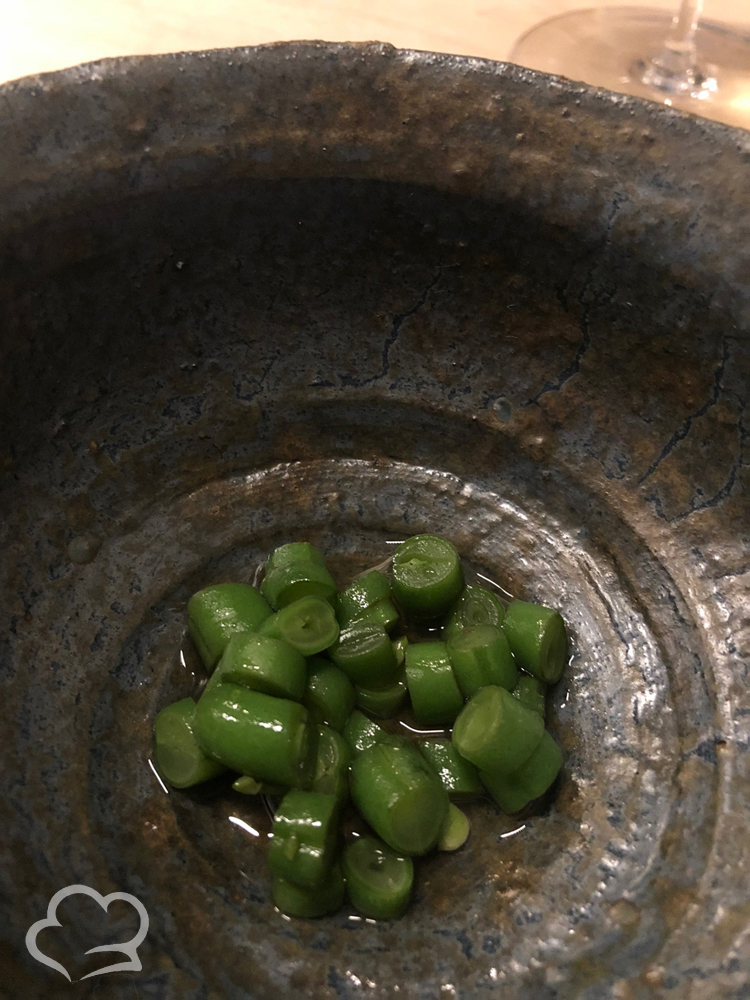
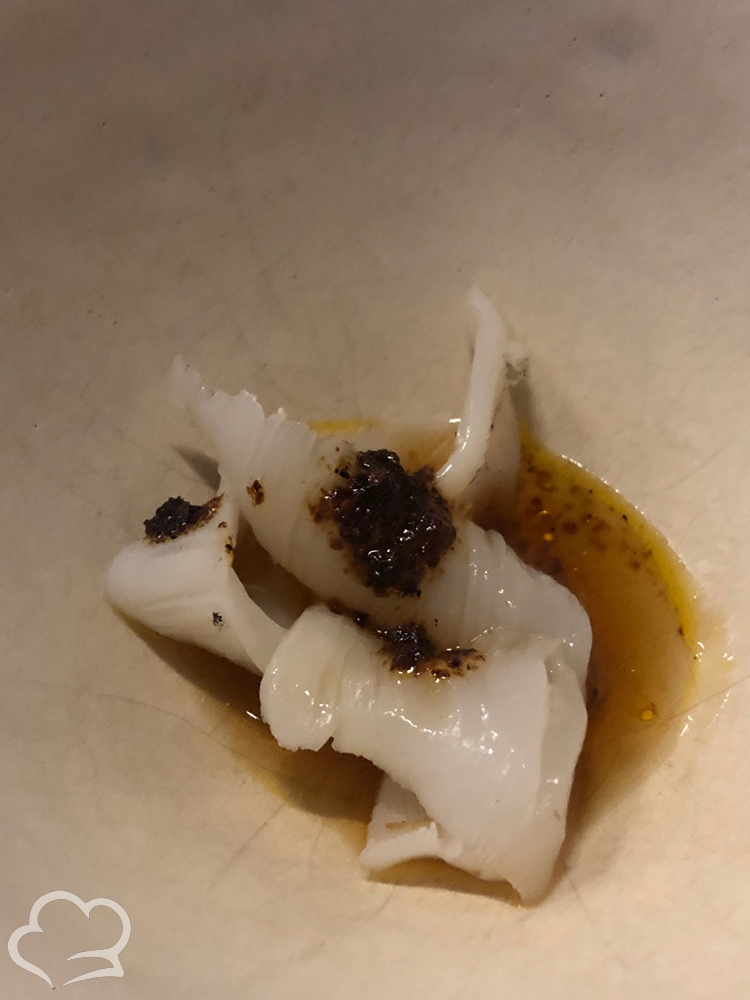
The twenty-seventh bite was a continuation of seafood (with connections to David – this time from his father-in-law) in the form of lobster claw meat lightly steamed and then marinated in cream and served with saffron garlic foam.
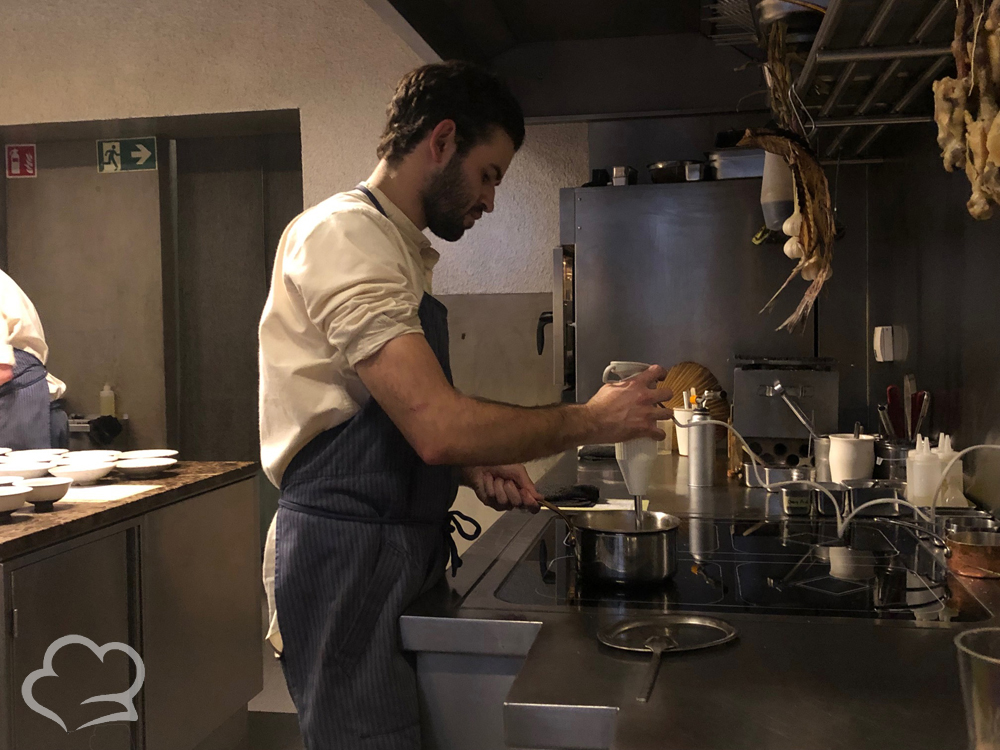
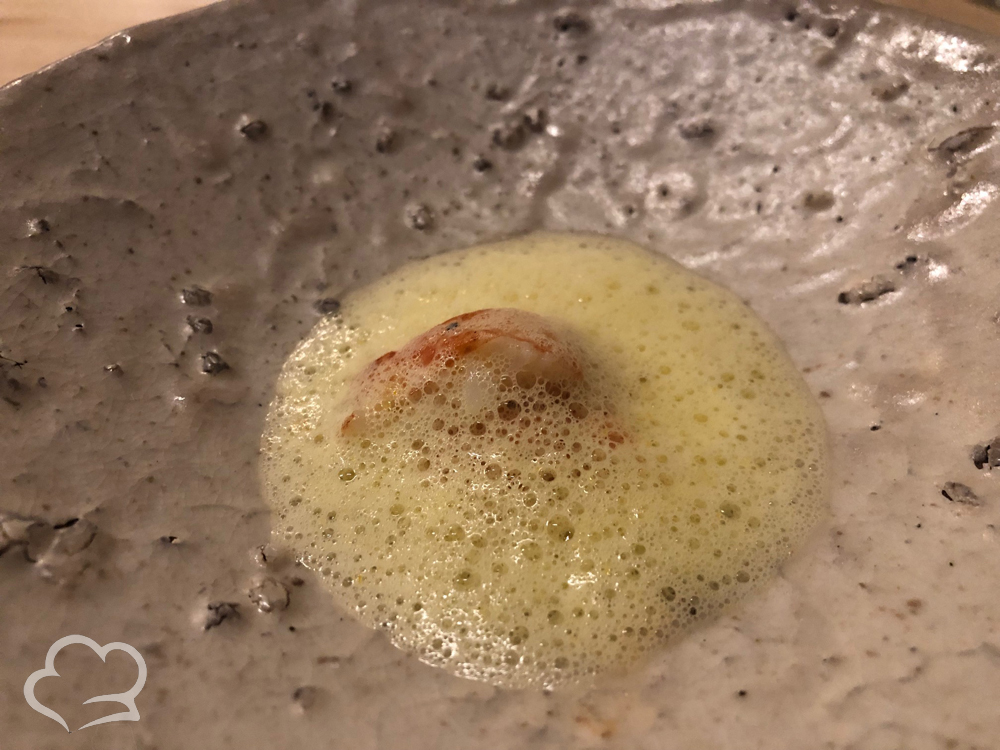
The twenty-eighth bite was agedashi eggplant – heirloom eggplant coated with corn starch, and seared on all 6 sides, served with sea bass broth. I’m a huge fan of the agedashi technique and so loved this dish.
The twenty-ninth bite was quite special – we won a bit of a jackpot. When you get lobster, sometimes it’s a female and on rare occasion it has roe. Generally lobster with roe don’t feed and so are infrequently found in lobster traps. However this week, “we” got one that had roe. This dish featured elbow of lobster, served with lobster roe and dashi jelly.
The thirtieth bite was called “chawanmushi” is a savory egg custard cooked in a tea cup. Here is a bowl, the silky egg custard was overlaid with shiitake dashi with oyster mushroom and chopped chives. This was a hearty, rich dish and I was surprised it was served in such a large format in the context of this meal of many small bites. However, never one to look a gift horse in the mouth, I didn’t complain and I did eat it all.
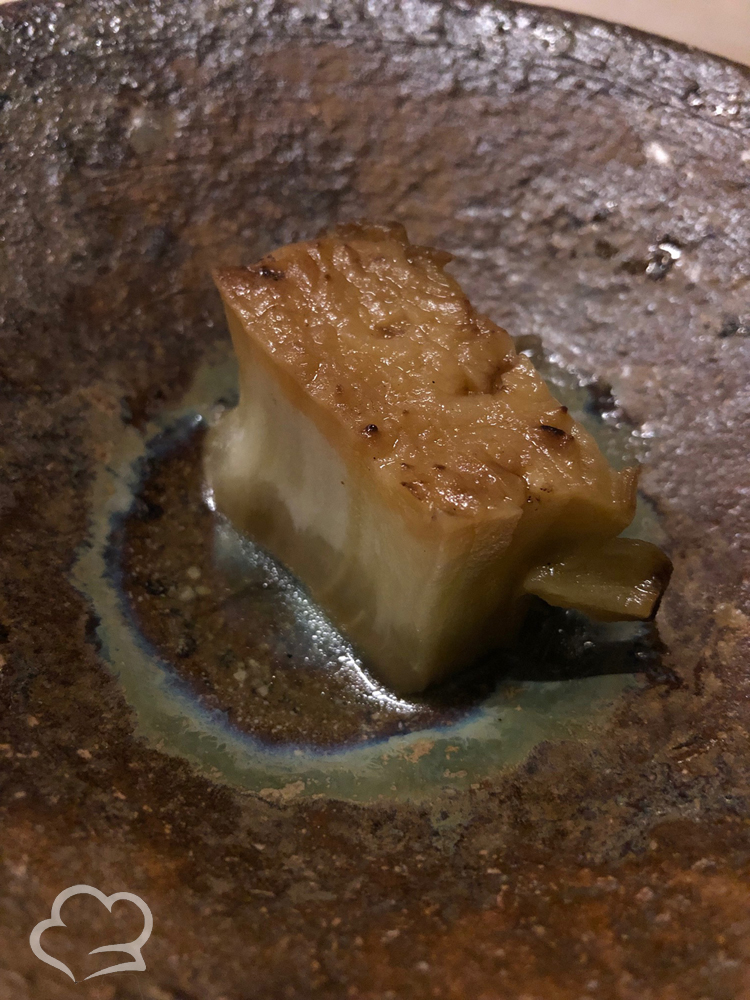
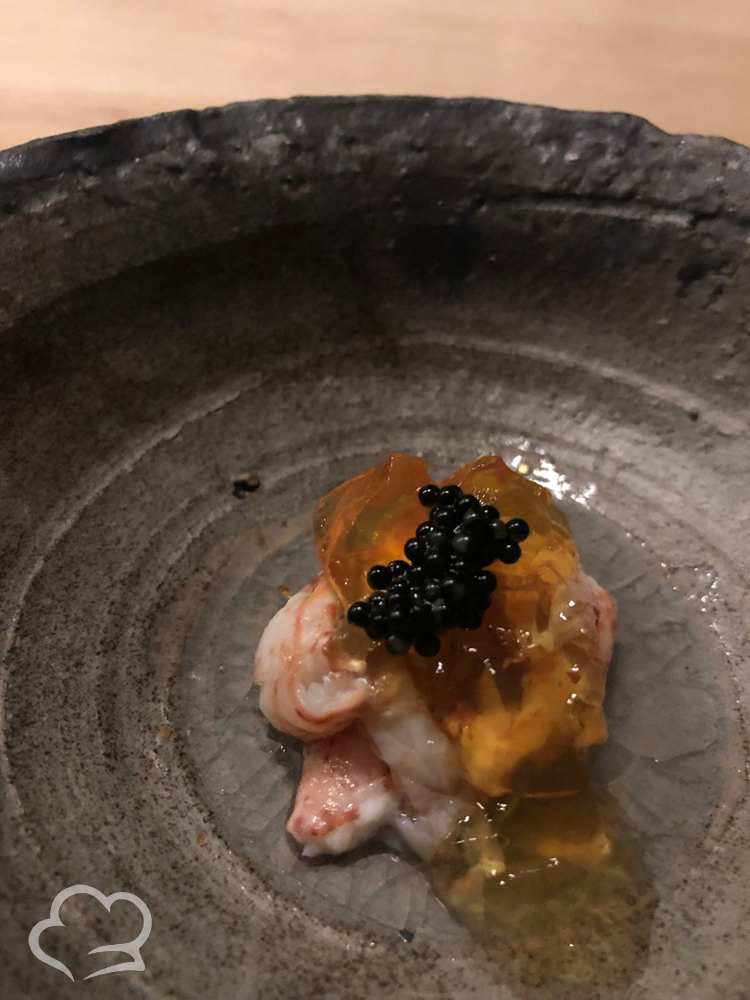
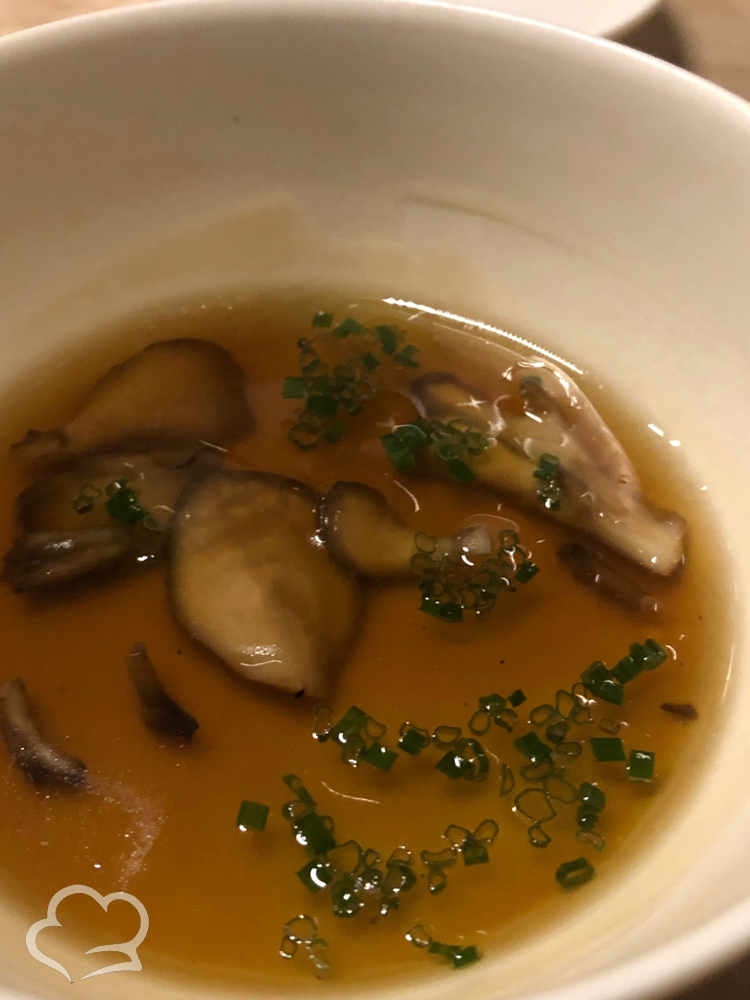
The thirty-first bite was grilled cauliflower basted in juice of wasabi leaves and topped with miso- a gift from “a famous chef in Japan” – perhaps Chef Yamamoto of RyuGin?
The thirty-second bite was a palate cleanser and an exercise in sharing. Fresh red raspberry with one half of a white raspberry. The day’s shipment only had 4 white raspberries and so most patrons got a quarter of a raspberry while a couple lucky of us got a half. Trust me – I savored every druplete (that’s what each bump is called).
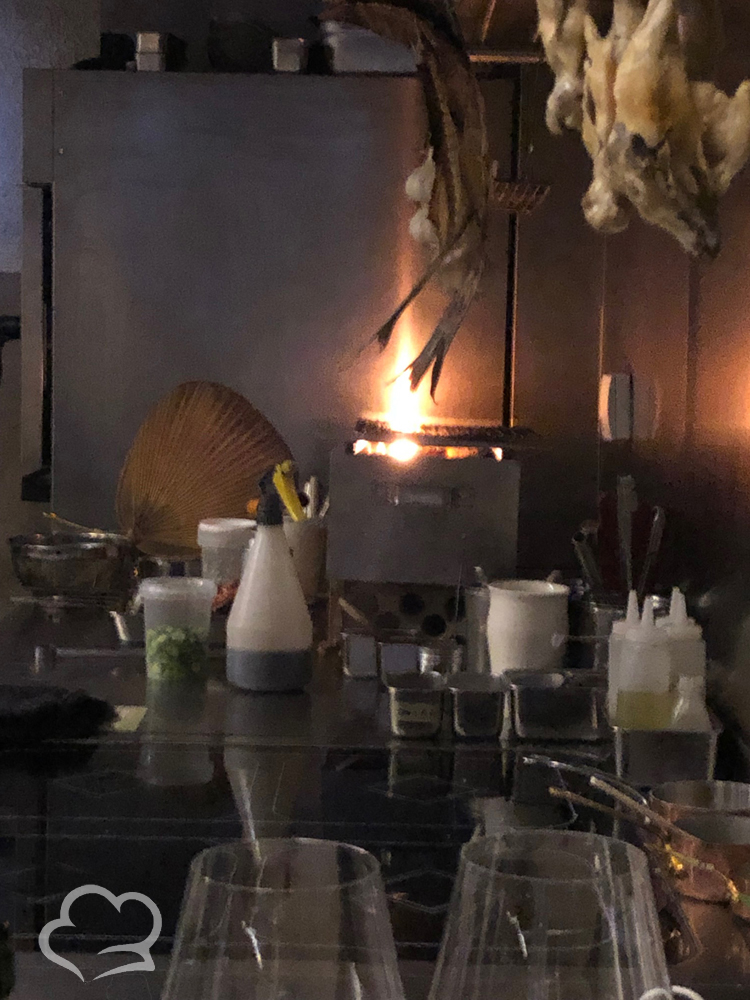
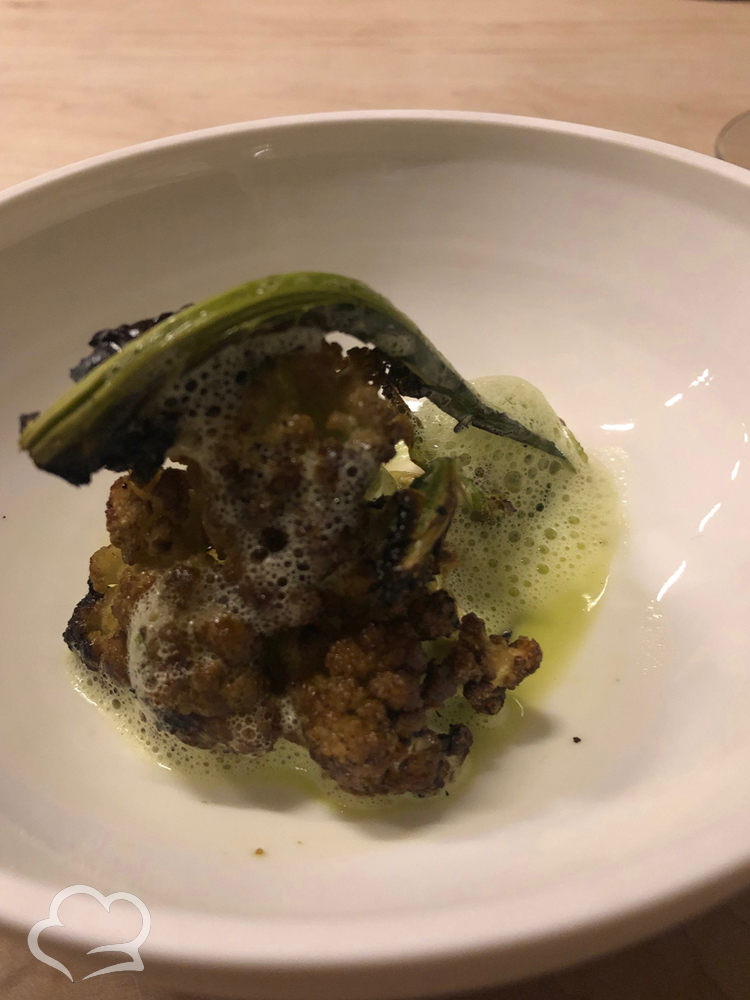
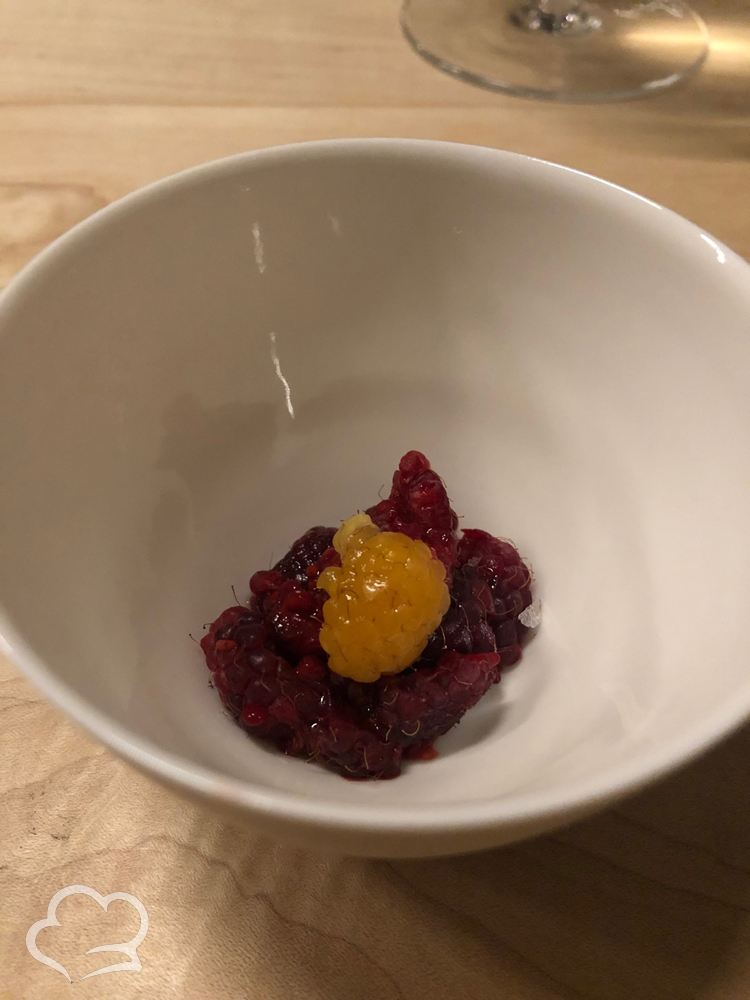
The thirty-third bite was lobster tail cooked in butter and glazed with cherry. I’m a big lobster fan so again considered pilfering neighbor’s dish.
The thirty-fourth bite was fava beans in bay leaf broth – the vegetables compliment to the previous bite.
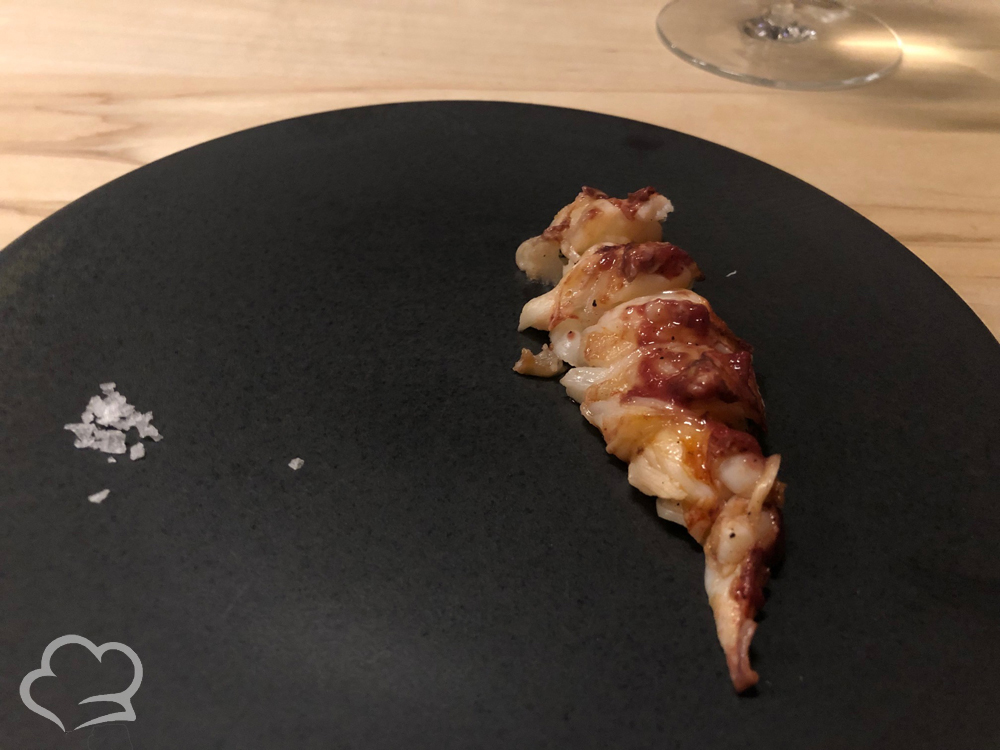
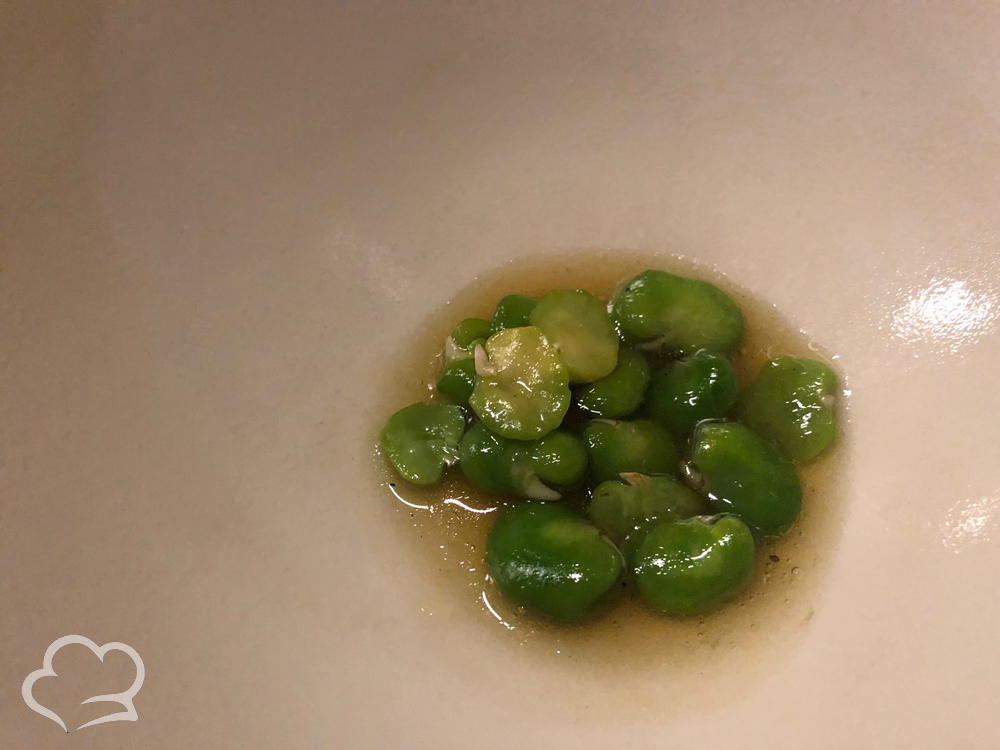
The thirty-fifth bite was slices of abalone mushroom slow cooked over a low flame for four hours and served with veal jus. I’m not embarrassed to confess the my notes got shorter and shorter as I drank more wine – making my report more terse.
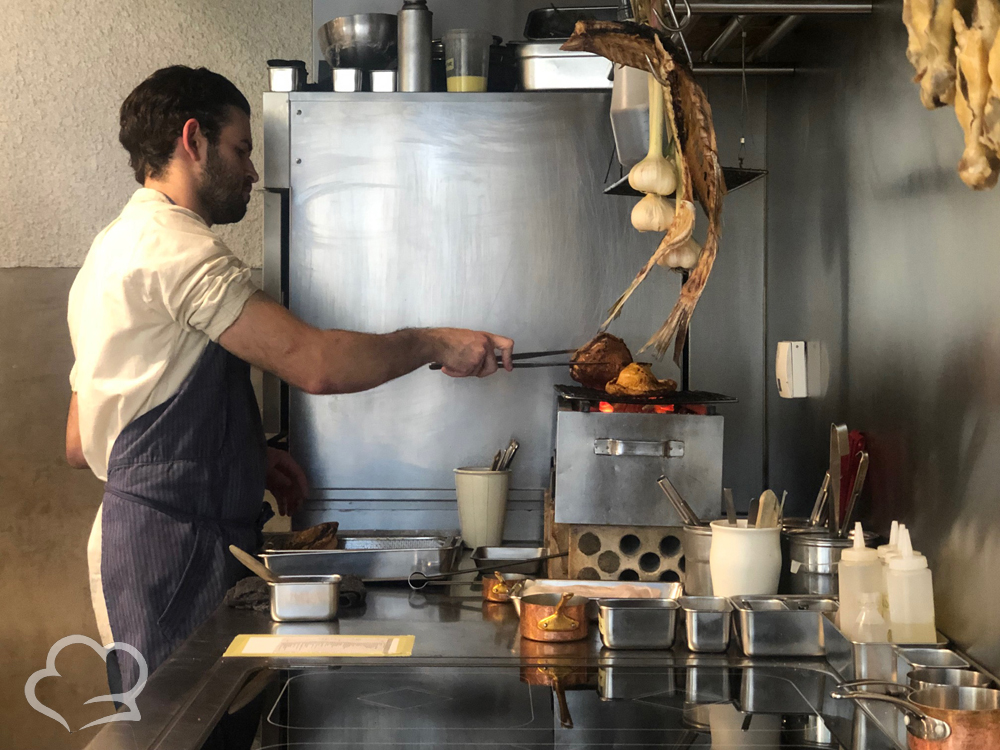
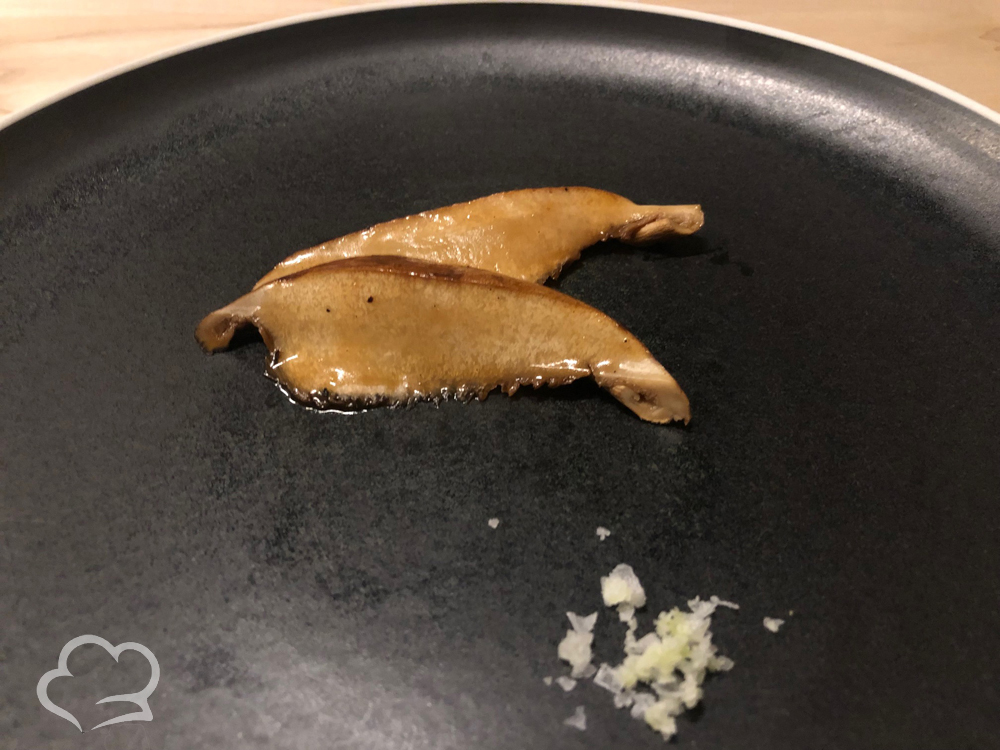
The thirty-sixth bite was black current cooked with eel fat and glazed with cherry juice.
The thirty-seventh bite was the apex dish, the one we had been working towards all evening, and that had been alluded to a number of times. Eel, cooked in eel grease with Japanese pepper (kinome) sauce. There are only 4 fishermen licensed to catch eel on the river where the eel originated so is a rare commodity. Shipments only come a few times a year.
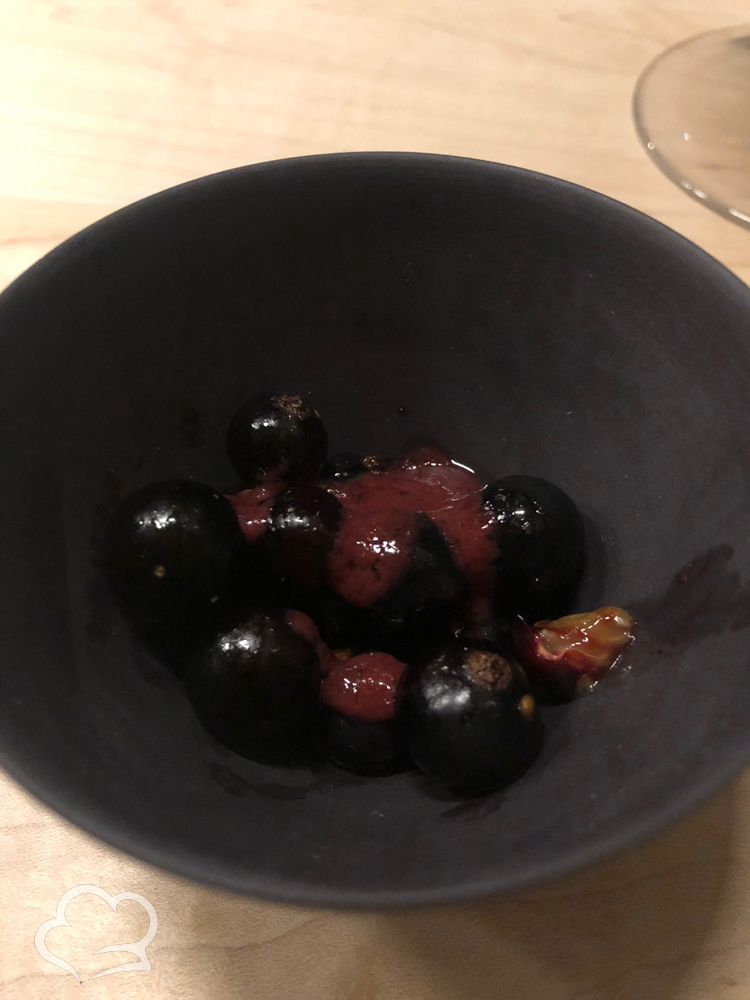
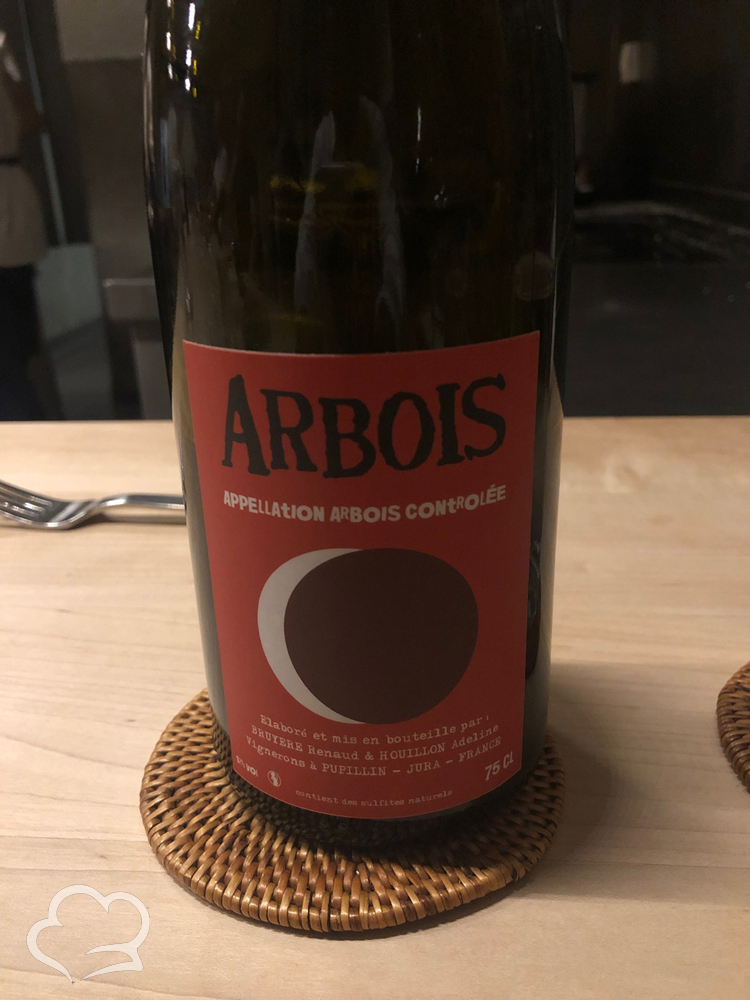
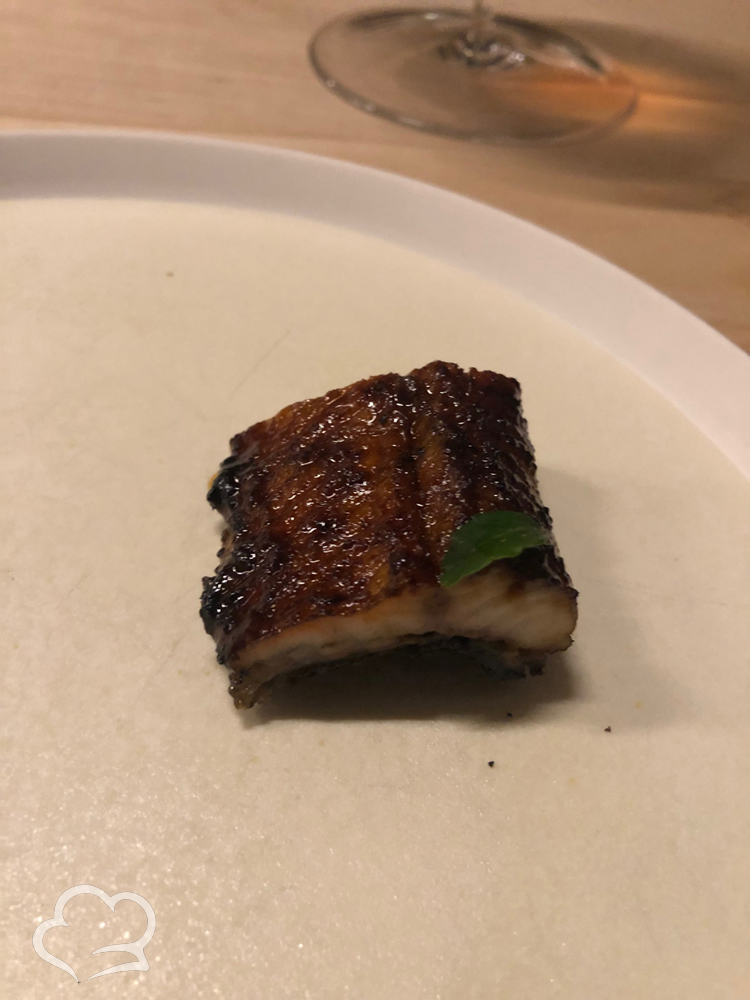
The thirty-eight bite onwards constituted the bites of dessert. We started with a palate cleanser of peach sorbet churned for seven days to get a butter like consistency. The flavor of peach was incredibly intense. Normally frozen desserts have a muted flavor because of the numbing effect on the tastebuds, but this felt like biting into a perfectly ripe peach. The oil used to create the emulsion was made from peach pits – I can’t begin to imagine how many peach pits it takes to make a teaspoon of oil.
The wine that was paired with desserts was the 2018 Vom Berg Riesling Spätlese from Rita and Rudolf Trossen. This lush and balanced (between sugar and acidity) wine was practically created for fruit dishes with tropical fruit nose and citrus and peach notes. I was impressed with how mature this wine tasted given its recent vintage. I’ll definitely adding this wine to my growing collection.
The thirty-ninth bite was simple yet decadent (is that oxymoronic?) fresh strawberries, pepper from Tuscany and cream from a particular cow named Ushie. Why someone would have this level of detail, is beyond me; however they shared it with me, so I share it with you.
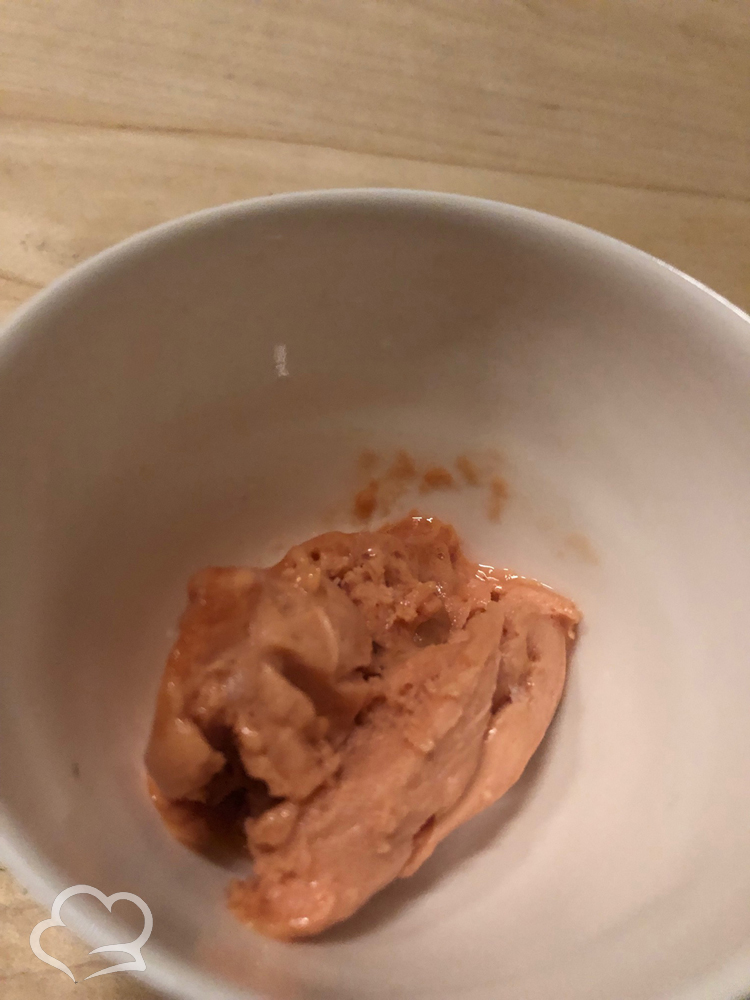
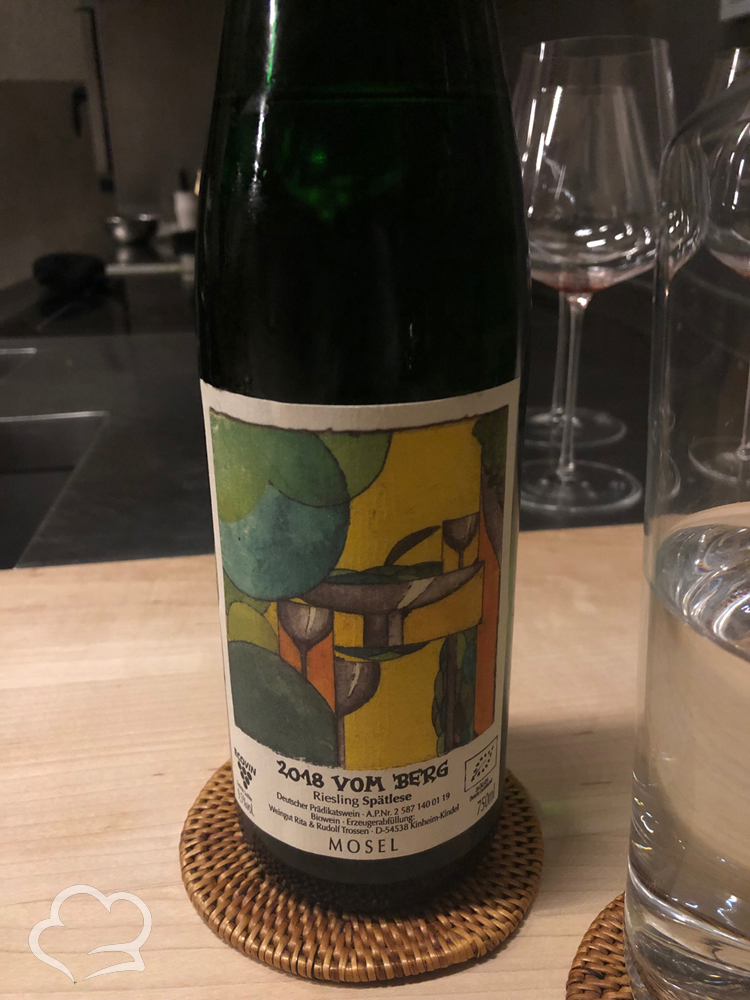
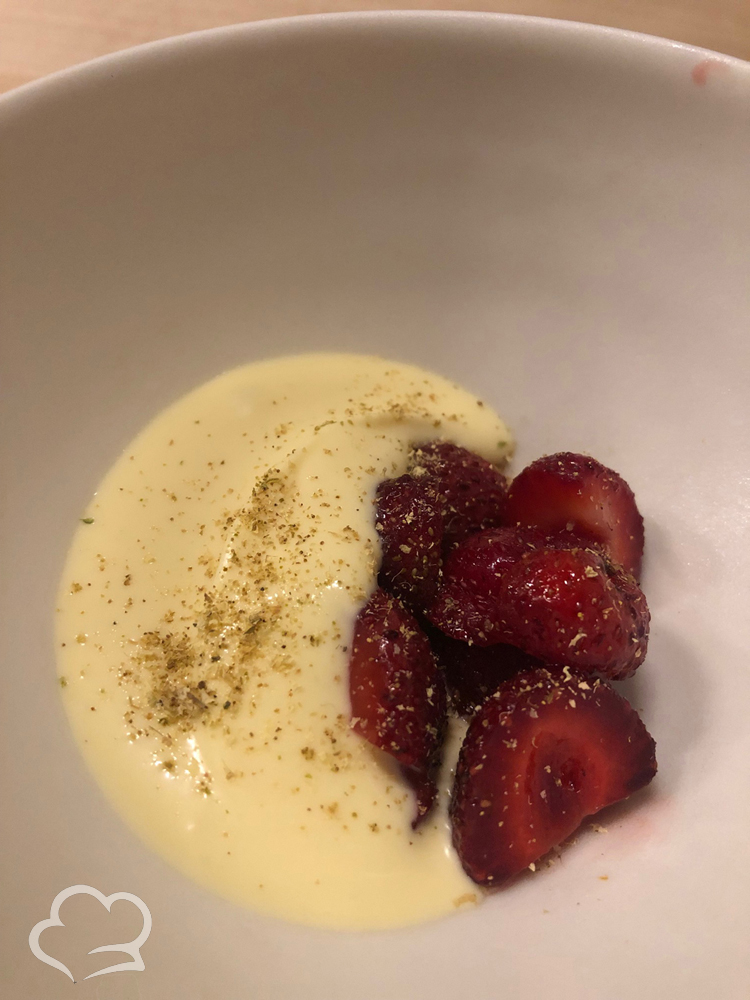
Our friend the pea pod make their final appearance of the evening in the fortieth bite as an ice cream with olive oil from Sicily and blueberry powder (lyophilized). As I’ve noted below, pea pods are a subtle flavor and I’m not sure ice cream is an ideal application. But, the tying together of initial courses with dessert was a worthwhile goal – I applaud the creativity.
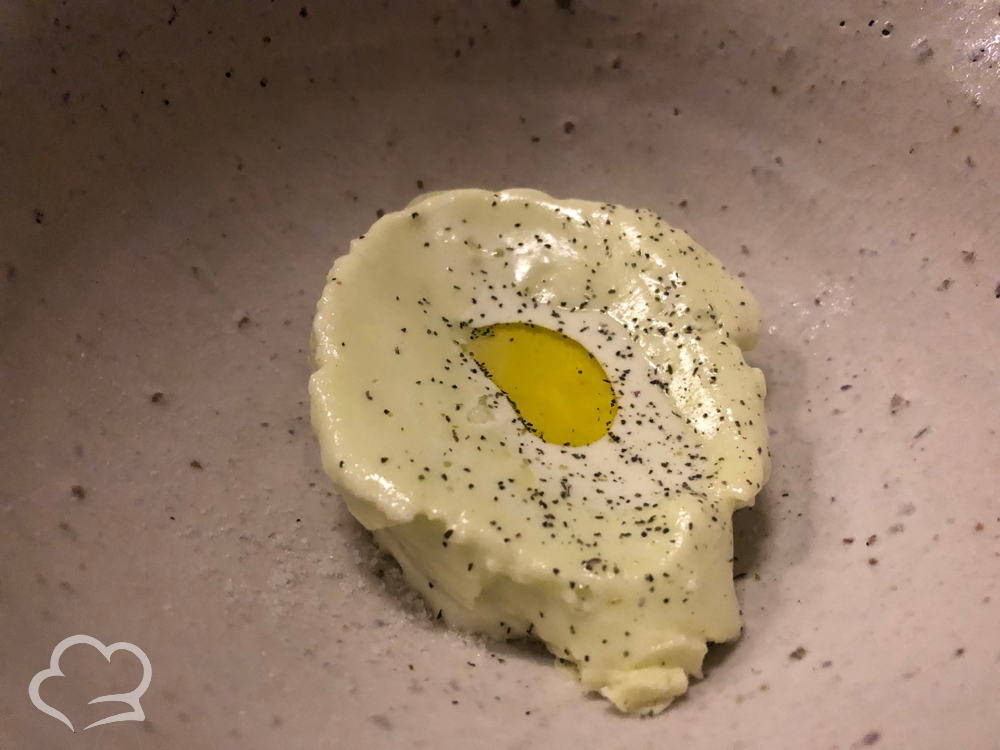
The forty-first bite was a strawberry and tomato tea with an elderflower ice cube with a surprise at the bottom of the bowl- a dollop of frozen cream that slowly dissolved into the drink over time. The elderflower and cream got stronger over time- a nice effect.
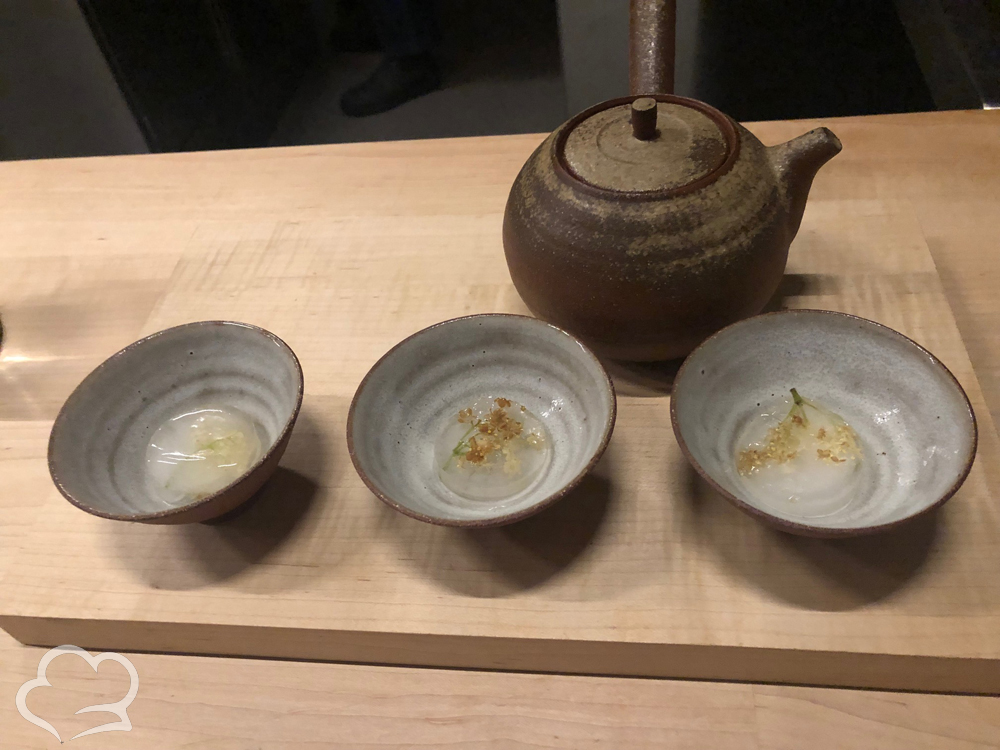
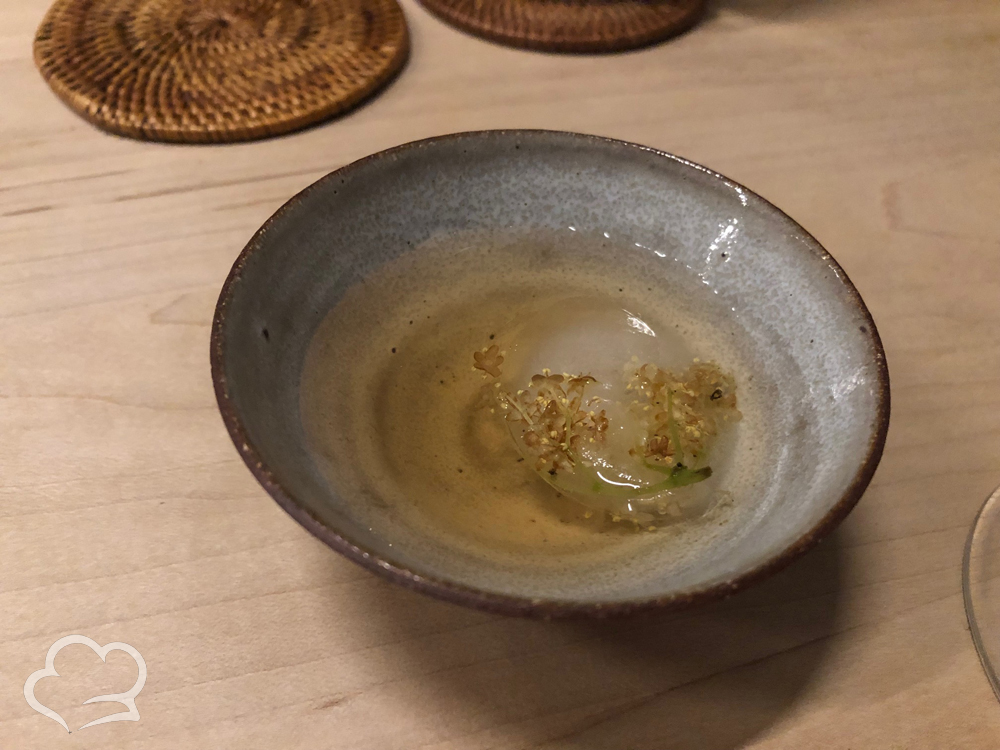
The forty-second bite was grilled berryl berry with blueberry juice – a very jammy item.
The forty-third and final bite was fresh berries on a bed of shaved ice – strawberries, gooseberries, red and white currents.
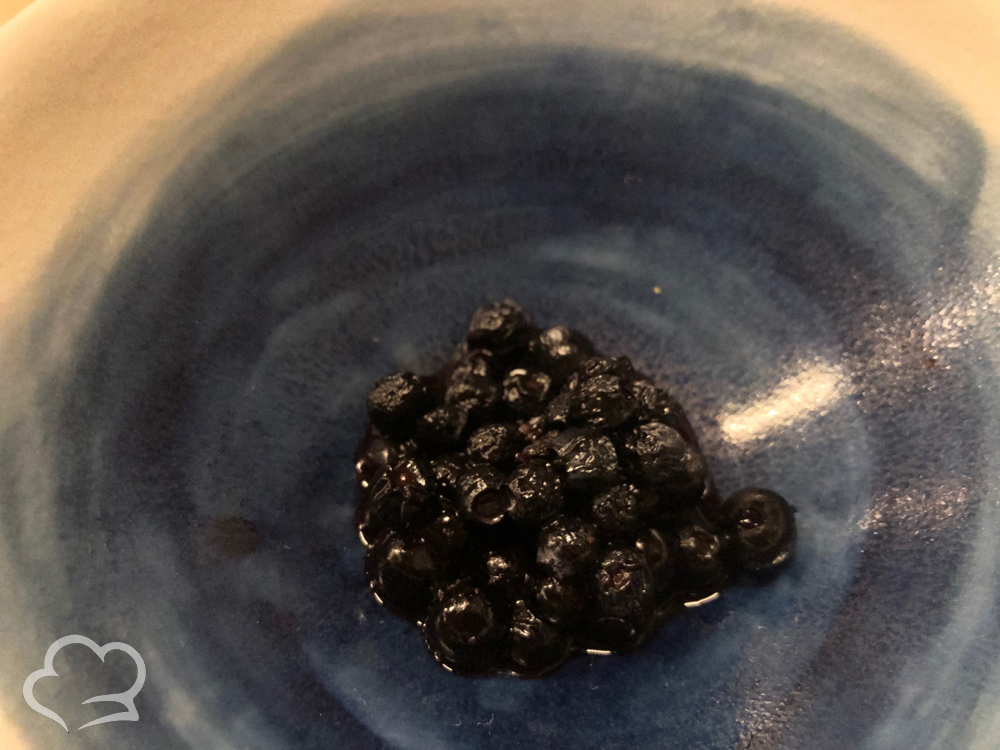
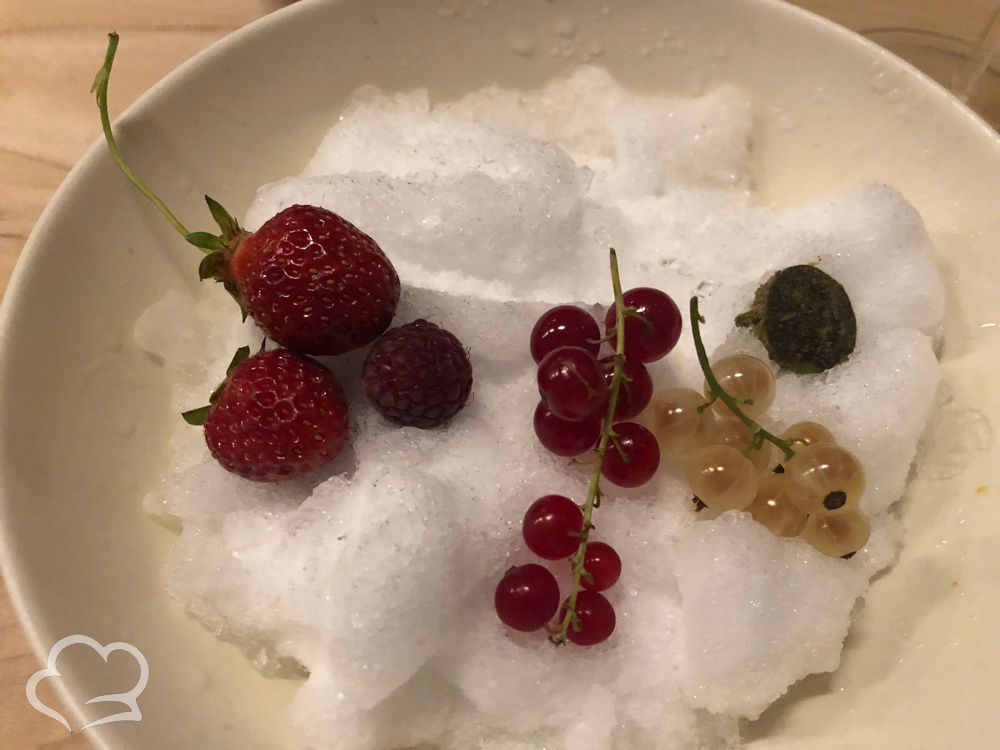
A picture with the culinary team and my signed menu!
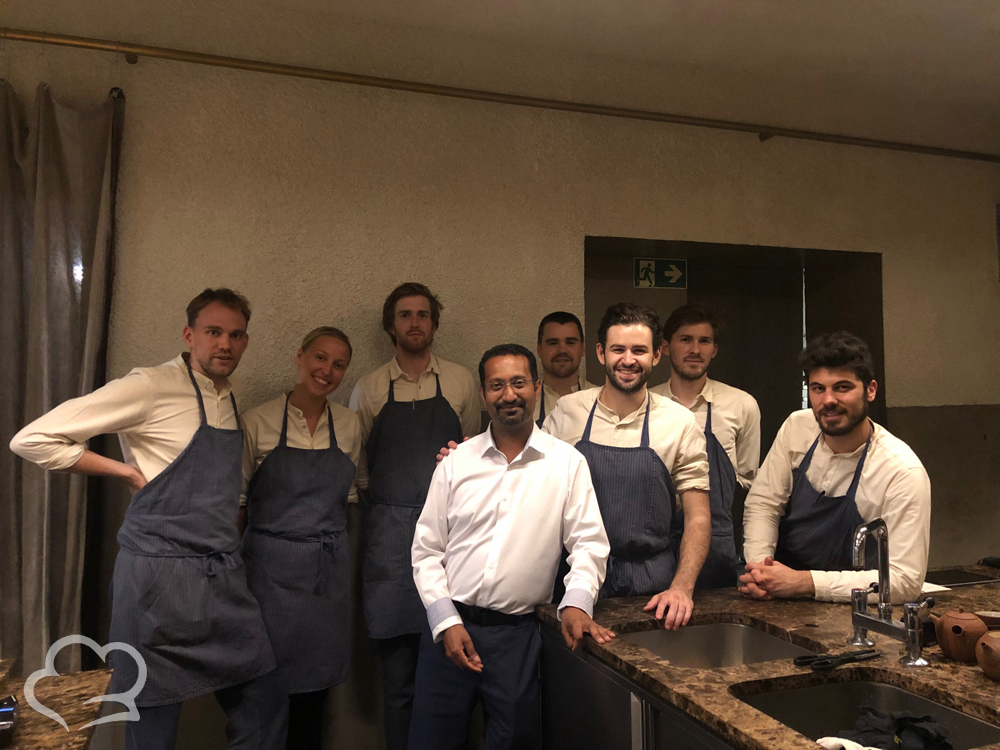
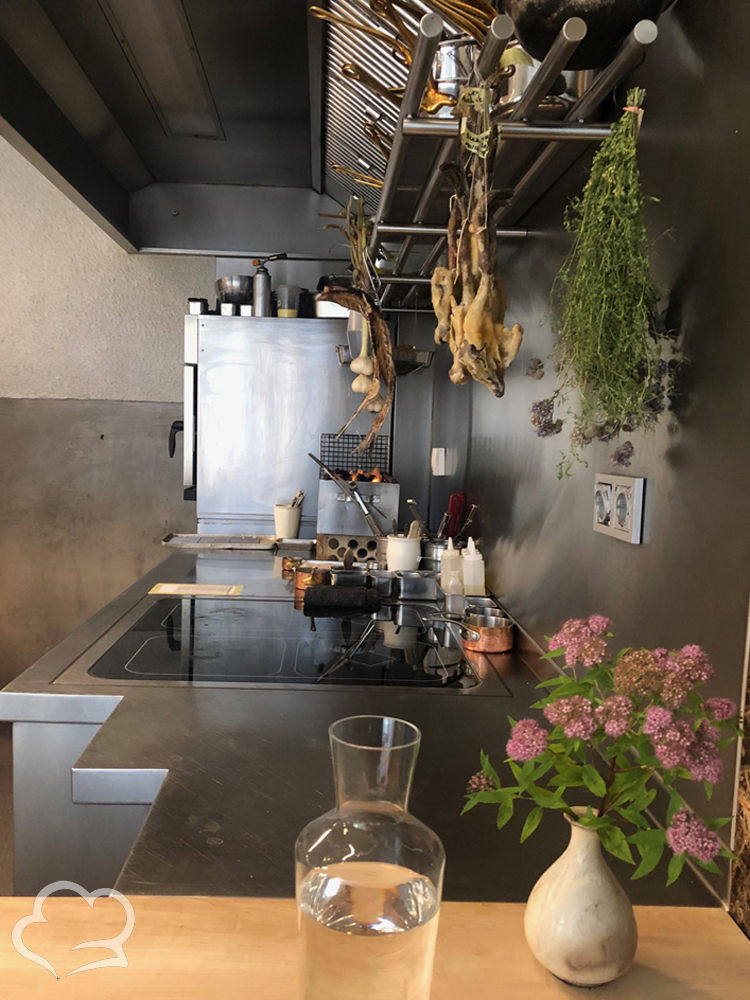

With the conclusion of this tour-de-force, some thoughts:
Japanese inspiration is evident throughout the meal, which is hardly surprising as Chef Watson-Brawn left Canada when he was 16 and impressively ended up as one of the first Gaijins in the kitchen of the legendary three star fine dining institution RyuGin in Tokyo.
What impressed me was that at Ernst these 40+ bites are served within the course of three hours, instead of the 5-6 hours it might take at any other restaurant. While this may suggest a rushed experience, in fact quite the opposite turns out to be true – more an immersive theatre act, that captivates, and fascinates so you just forget to check the time entirely until its time to leave.
This meal isn’t designed so that each dish wows you – that would be overwhelming. Instead, the idea is to balance spectacular with sublime in a well choreographed culinary dance. The idea that this changes on an almost daily basis is a testament to Dylan’s artistic sensibility.
This was an outstanding meal in every way – one of the top ten meals I’ve ever had. Not just the food, but the entire experience- particularly watching the meal being put together in front of us, interacting with the staff through the evening. We got to taste ingredients, sip rare wines, and generally be much more connected with the food than I’ve ever been. I’m sure the highly personalized low-volume counter-dining model will become more popular and will be all the rage in the coming years. But for now, get your ticket to Ernst for this life-altering culinary adventure.
